About this blog: Doors of Zanzibar are historical artifacts documenting turbulent past of the island nation, tiny yet a key player in the old world trade route. Colonists came from as far as Arab nations, settled here, traded in human flesh. Europeans followed suit soon. Some sailors of Gujarat from India’s west coast stepped in during nineteenth century, while the rest ventured for the mainland Africa! Eventually, tidal waves of greedy and unethical trade ended and Swahili culture in all its glory was established in the island. The doors of Stone town Zanzibar stand mute witness to history.
Pin it for later read!
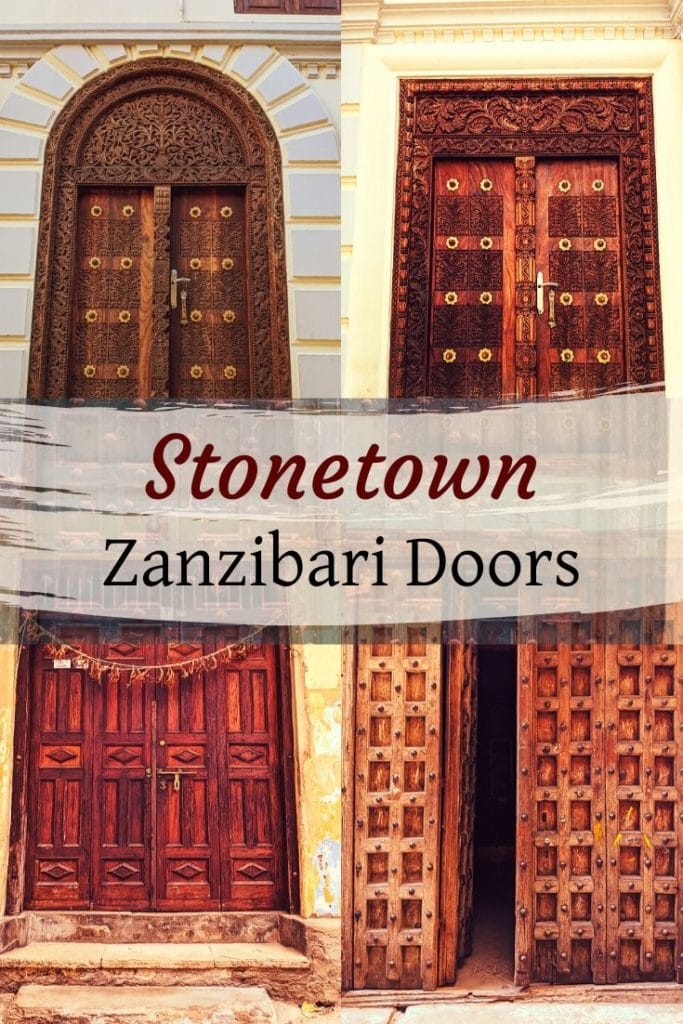
My father always wanted to build a house with beautiful doors. “The door should be of teak wood, and curved. It must be huge!” He would be particular in his vision of the grand door. “The door of Dr. Chakraborty!” If I am to say taking a cue from V S Naipal!
Indian doors are elaborate. Dramatic. They make the first impression to a visitor, a lot like a business card. You know whom you are going to meet. How big is the uncle’s mustache? Is there a bookshelves on the other side? Will the women of the house come out with plate of Rosogolla? Replace that with Kaju Barfi if you are somewhere in the north of the country. I am still not sure what happens in Indian peninsula. Regrettably, I have not made friends here yet, who will invite me home! But, I digress.
Please note, a map of Stonetown’s door scan be bought from the gallery Bookstore as a ready reckon-er. Though, I explored Stone Town by my own!
I spotted an uncanny similarity while walking aimlessly at the old narrow gullies of Stone Town, Zanzibar. India blends seamlessly in bits and parts of Africa, you like it or not. I watch it in a bemused way. I love to discover my home away from home, in all her glory, drama and eagerly wait for the new lessons of history, which my UPSC books might have skipped in the forming years.
But doors of Zanzibar was an utter surprise! A pleasant one. In the serendipitous encounters, I explored the eloquent doors of Zanzibar, of Stone town and beyond! I learnt how the traditional Swahili doors married into subsequent Arabic and Indian trading culture and birthed these marvelous doors, nothing short of pieces of art. How the old Zanzibari doors were once traded in gold in black market dealing in antique. The measures now taken to reinstate Zanzibar’s old door in their original context, preserve them and let history live in the old lanes on Stone-town, the UNESCO heritage site!
Tracing the trade route of Zanzibar through door art!
Door art of Zanzibar dates back to late seventeenth century, that is close to 400 years. Profound pieces of wood is used to build the door, one of the primary foundation of each house. Hand carved, adorned with motifs identifying the house-owners’ origin, social stature, identity, religious belief, the Zanzibari doors are living and breathing part of the households!
Also read: Doors of Varanasi, Wayfaring in the old lanes of Kashi!
The Arab Doors of Zanzibar
In Instagram, I saw Lost with Purpose roaming in Ava, Saudi Arabia and could immediately identify the beautiful doors she was showcasing! Doors similar to that I had spotted in Stone town, Zanzibar with historical reference pointing towards the Omani sheikhs who ruled the island for a century of so.
The more intricate carving on the door, the more praises would shower for the Arabian owner. The Arab doors usually have a rectangular shape, with sea waves or date palms embedded, indicating their arduous sailing from the Arabian peninsula.
From Sultan Barghash to Slave trader Tippu Tip, all of the wealthy residents featured particularly beautiful doorways to their mansion, remnants of which can still be seen in and around Stone town.
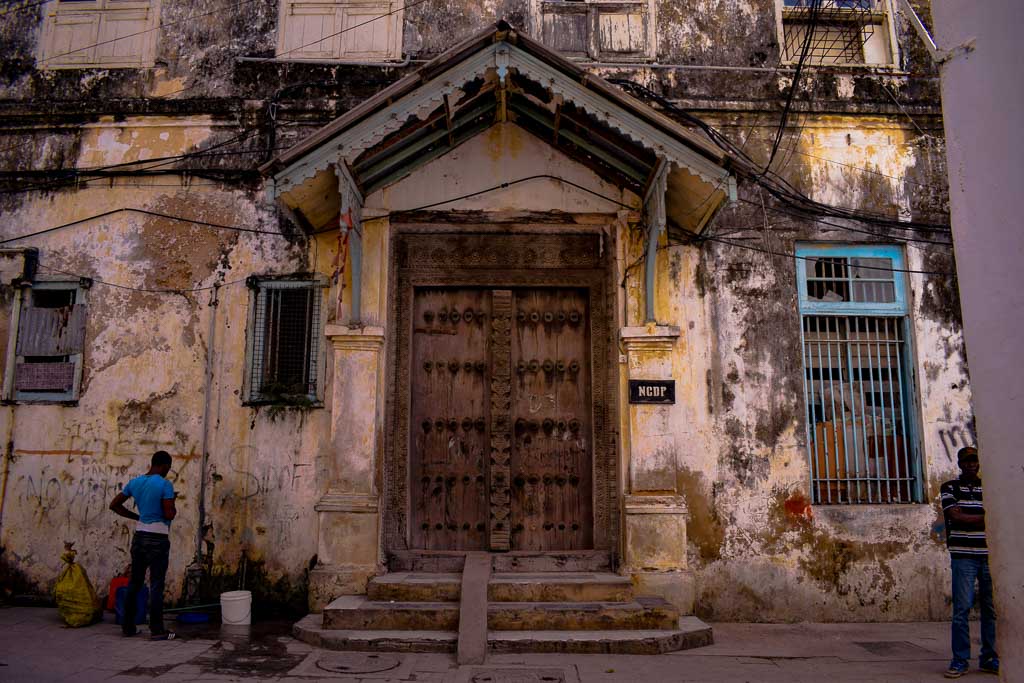
Wondering where is the oldest carved door in Zanzibar (1694)? It is now the front door of the Zanzibar Museum of Art.
Swahili Doors of Zanzibar: Where it all began!
The Swahili styled doors of Zanzibar are relatively simple doors and are the first of its kind. These doors celebrate the aquamarine hues of Indian Ocean, have detailed panels on the sides and plain panes. These doors thrived till the Arab tradesmen set foot on the island! Now, the number of Zanzibari doors cross 800. I saw a few old houses at a local fishermen’s village at the north of the island, Nungwi, where the elaborate ornate doors have found a place!
Usually, Swahili doors are preceded by Barazas (the stone benches). If you are a Bengali, you can close your eyes and think of “rocke boshe adda dewa.” Barazas helped keep the women of the house from outsiders’ vision. Zanzibar was and is a conservative country.
Also read: A photoblog on Zanzibar Island!
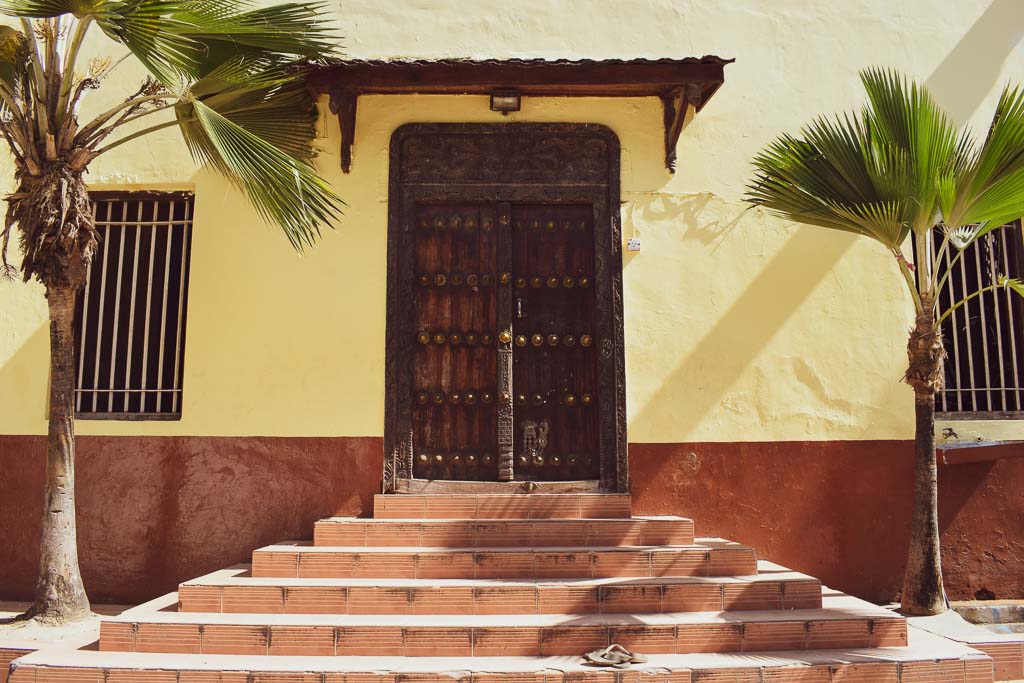
A simple door of a mosque at Stonetown, Zanzibar.
Also read: how to prepare for an African safari, the Great migration at Masaimara!
Zanzibari doors have quirky features. For example, there is a male and female version as stated in historical documents. Some of the doors also feature a small side door for everyday use. Who will take the pain of opening such big doors everyday?
Doors at Stonetown were majorly dominated by warm wooden hues or somber grey. The Central post of the door would be carved too. Once opened, the doors would usually lead to a mosaic hallway.
Also read: The Ultimate guide to Travel in Mauritius, the island Paradise of Africa!
Not every door at Stonetown is real old-world, if you know what I mean! Since they are quite a site, and a major tourist draw, nearly all the souvenir selling are done through such doors.
Note the door on the left marked with Gujarati letters. The door on the right is owned by a Chinese Zanzibari house, who also serves beautiful steamed fish and fried rice in the restaurant name Eden Garden. My Bengali taste-buds make me feel elated whenever I spot a Chinese food joint! they can never go wrong with their fish and rice staple, which is my go to meal!
Fish and chain carved on the door panels indicate the house-owner was a tradesman. He had probably dealt with fishing in Indian ocean and traded in slave market.
Another report talks about these designs dates back to classical antiquity and depicts Syrian goddess Atargatis or the ancient Egyptian fish god. The fish motif used in Zanzibar doors are from relatively olden days. It gradually became a pineapple and the pineapple, in turn, became a symbolic welcome gesture! How our vocabulary evolves!
Also read: How does a fish market in Kolkata truly look like?
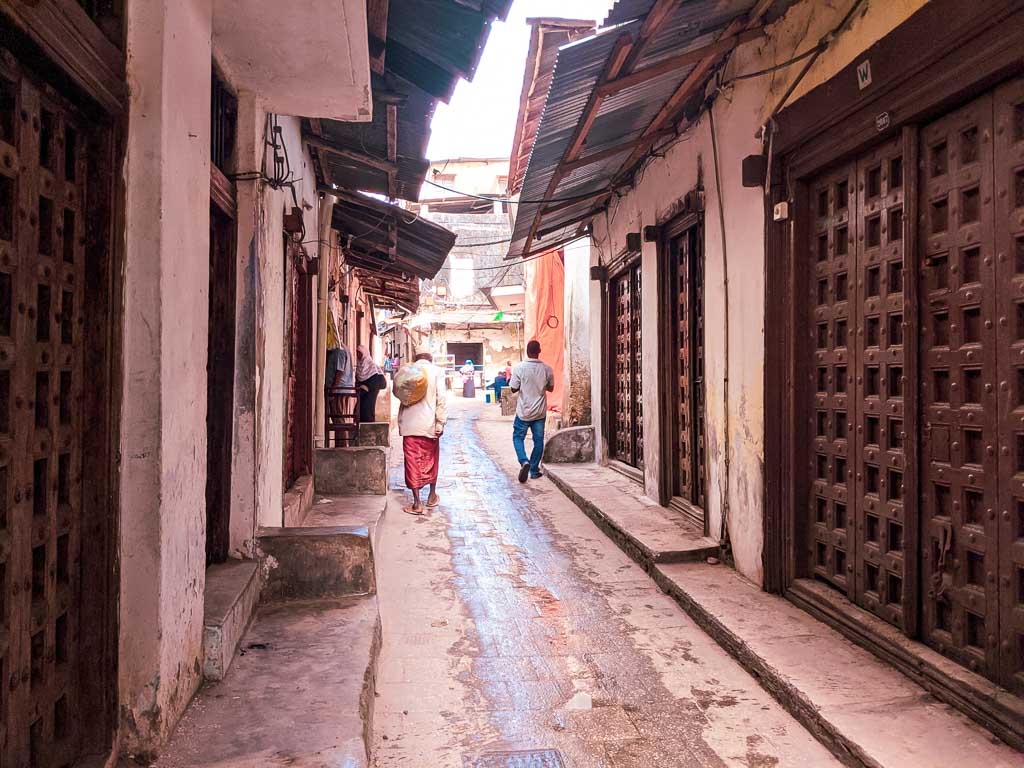
The Indian Doors of Zanzibar!
One look at them, and I knew I am seeing home here! The arched curve on the top, the protruding metal studs, floral design: Indian influence is spelled well.
Most of the Indian doors have Punjabi or Gujarati origin, if we are to narrow down on a particular region. Stud on the doors are to shy away elephants. Where is elephant in Zanzibar? I think in my mind.
Indian doors in Zanzibar are made of Burmese Teak wood! The wealthy Gujarati businessmen would ship them all the way from Myanmar in those days! I chuckle in my mind! We still harbor this ungodly obsession with teak-wood, especially Burmese teak-wood! I grew up hearing stories from grandma, that her father went to the jungle and spotted an Airavat (the elusive white elephant, endemic to Burma). He returned with a “Kolom” (grafting tree) . He planted it at the backyard, hoped it to grow up and supply for necessary dowry during the daughter’s marriage.
Universe laughed and parted the country soon after. My grandmother came from then east Pakistan, now Bangladesh. Anyway, I digress!
Also read: 20 of the safest of destinations in India!
On the right side, you can see a lion along with the studs, symbolizing the British and subsequent European influence? In my mind, the lion faced water taps of North Kolkata cast a shed on Africa, one of the last vestige’s of world’s lion population!
Distinct to the other styles mentioned, the Gujarati doors of Stone town were utilitarian in nature. They were square, beaded, often lined the narrow lanes near the port and were befitting quick transactions. They are usually shop doors, set on the path from old fort to port, meant to do quick transaction. There is a generic neglect on the art part. Near Jaw’s corner, a number of identical Gujarati doors stand in queue indicating a bustling marketplace of the days of yore. Though, with time, the shopkeepers extended their habitat, built a balcony atop and eventually grew a house of the shop.
Note the elaborate locking system of the Zanzibar doors. The door on the right hand side has Arabic inscription, probably Quranic verses written on it. Majority of Zanzibar’s population is Muslim!
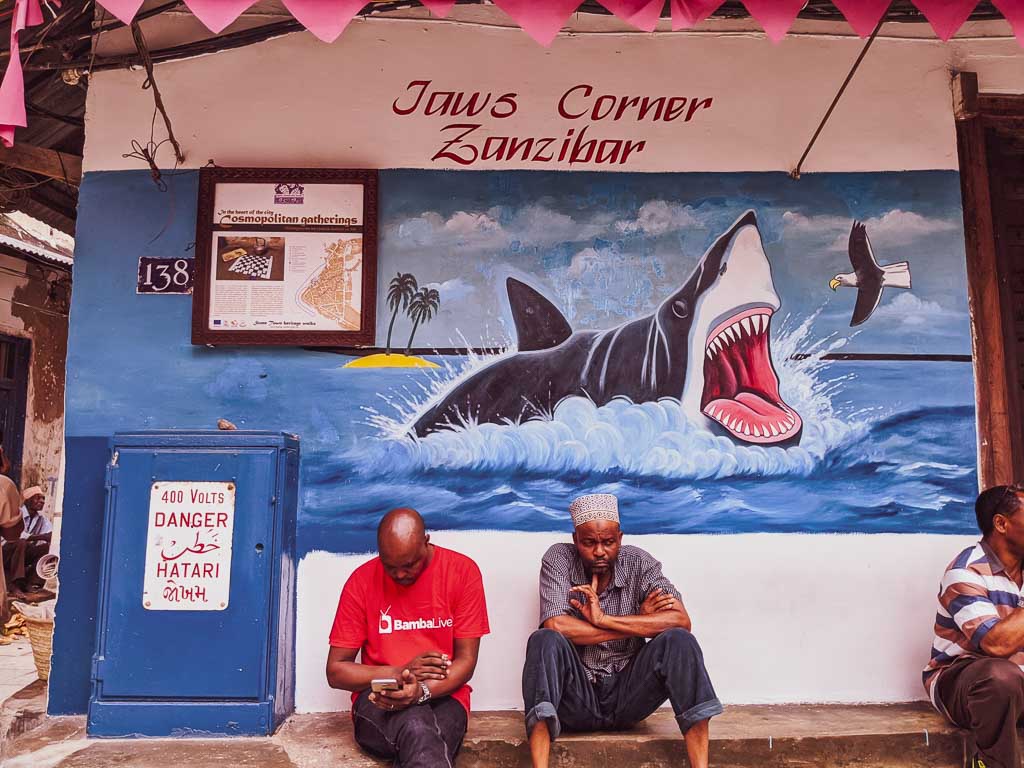
The Zanzibari doors were a part of honor of the house and the owner. The more elaborate they were, the bigger was the societal presence of the family, a ready-reckoner of the owner’s prestige.
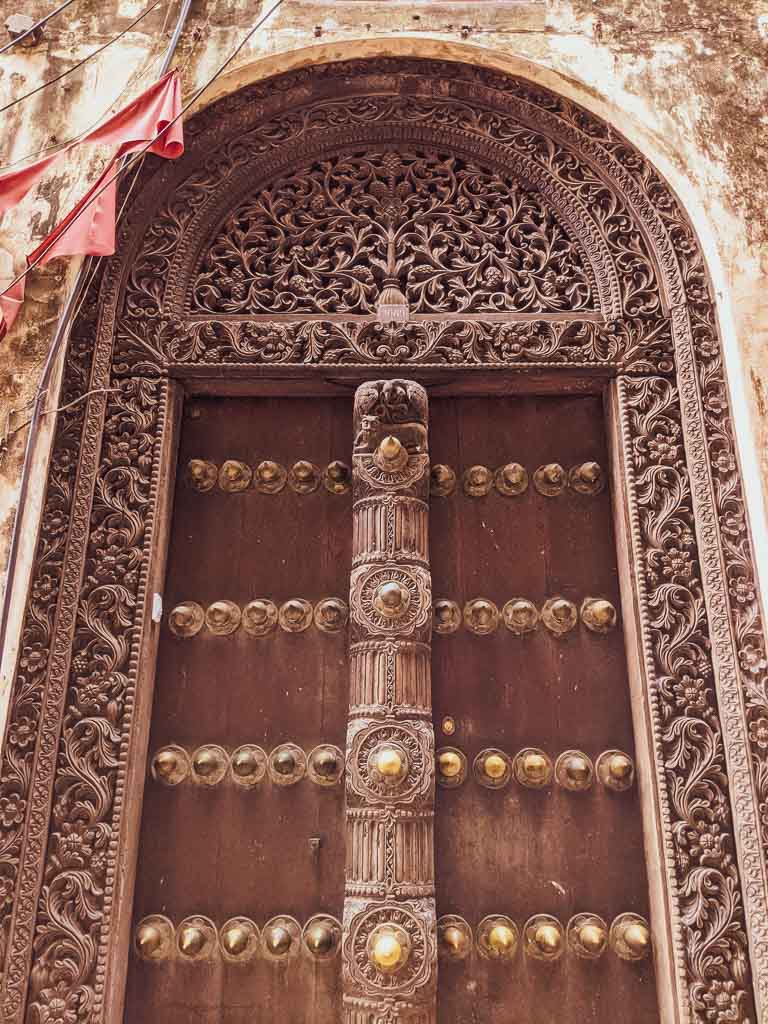
Vines on the door usually speaks for an owner dealing with spice plantation. Clove is one of the prized spice yields of Zanzibar and had historically brought in the mirth and irk of colonists from different continents.
Also read: 2 weeks in Myanmar, the ultimate guide!
Flowers usually stands for a family, one unit. The more number of flowers, the equal number of families sharing one particular house. The house on the left had 4 families at one point of time!
Standing today, the art of creating Zanzibari doors have been successfully revived by the Stone Town Conservation and Development Authority. They also make for one of the most beautiful souvenirs from the island. I saw a family (Indian origin) living opposite Dhow Palace and the owner, one elderly gentleman, designing these doors under a machine. The carving for a souvenir door is done through a machine. They also make ornate Zanzibari chests.
We came across a (not touristy market) on the way from Uroa to airport and found locals carving Mninga (African Mahogany) to prepare lighter version of the iconic Zanzibari doors. They are sold all over the island, mainland tanzania and shipped too. Zanzibari doors are the best example of reviving ancient art through generaional know-how. It may take upto 3 months to prepare each door.
Let’s stay connected on Facebook, Instagram, Twitter! You may also consider joining my mailing list. I send travel and photography related emails only once a month!
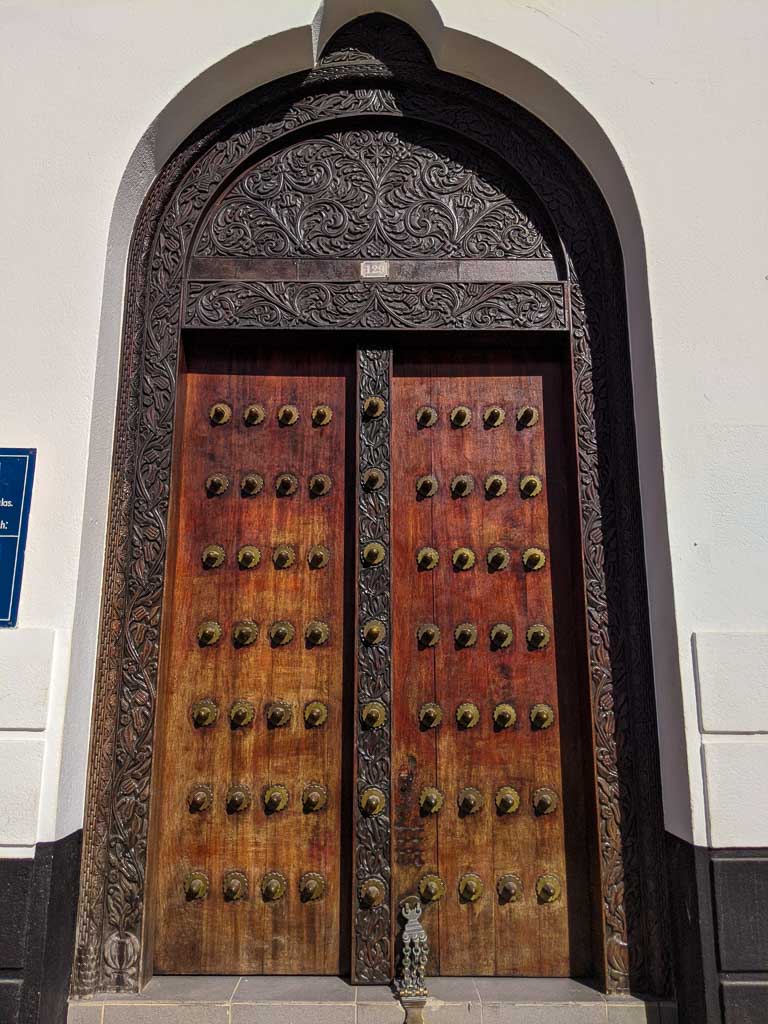
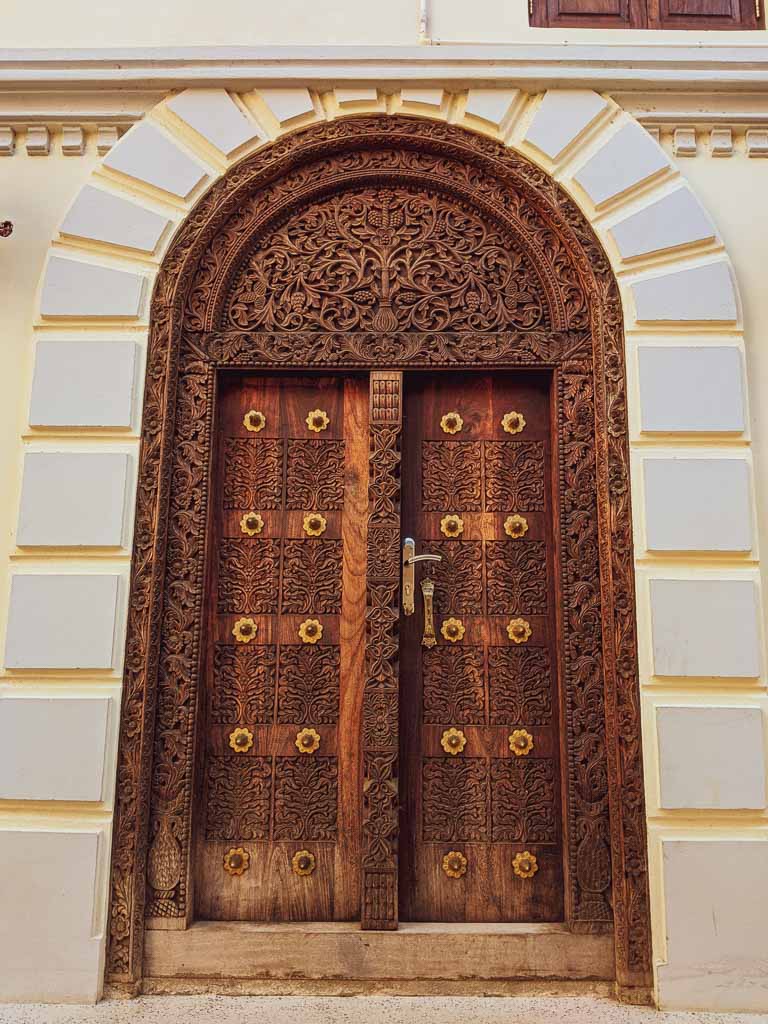
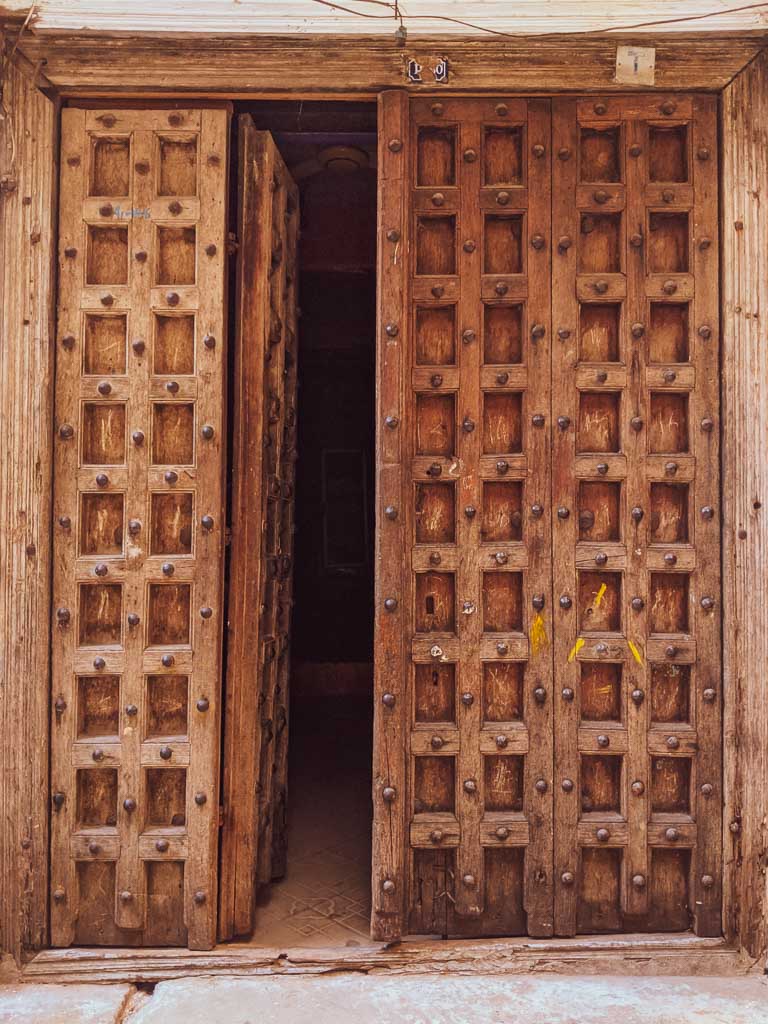
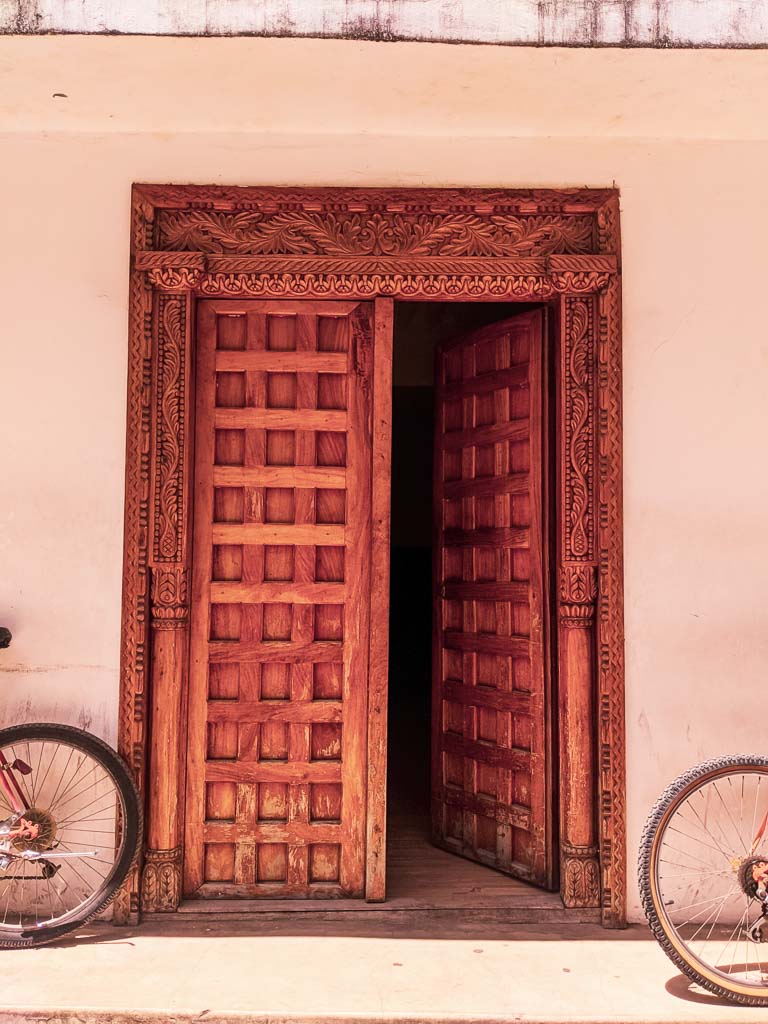
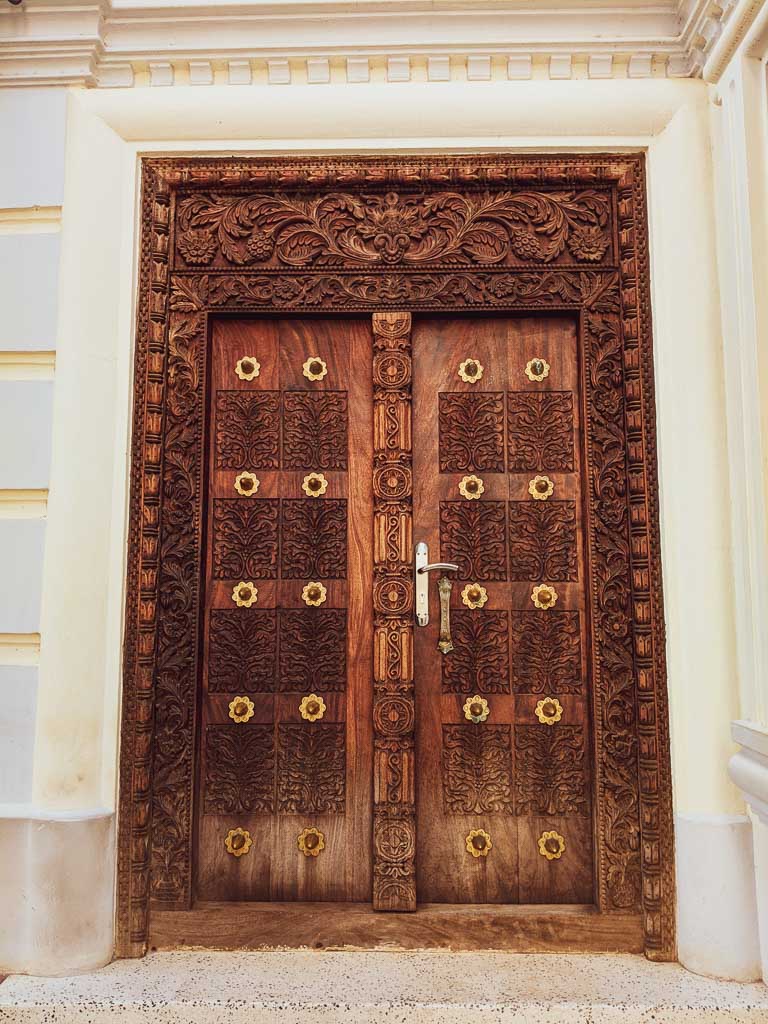
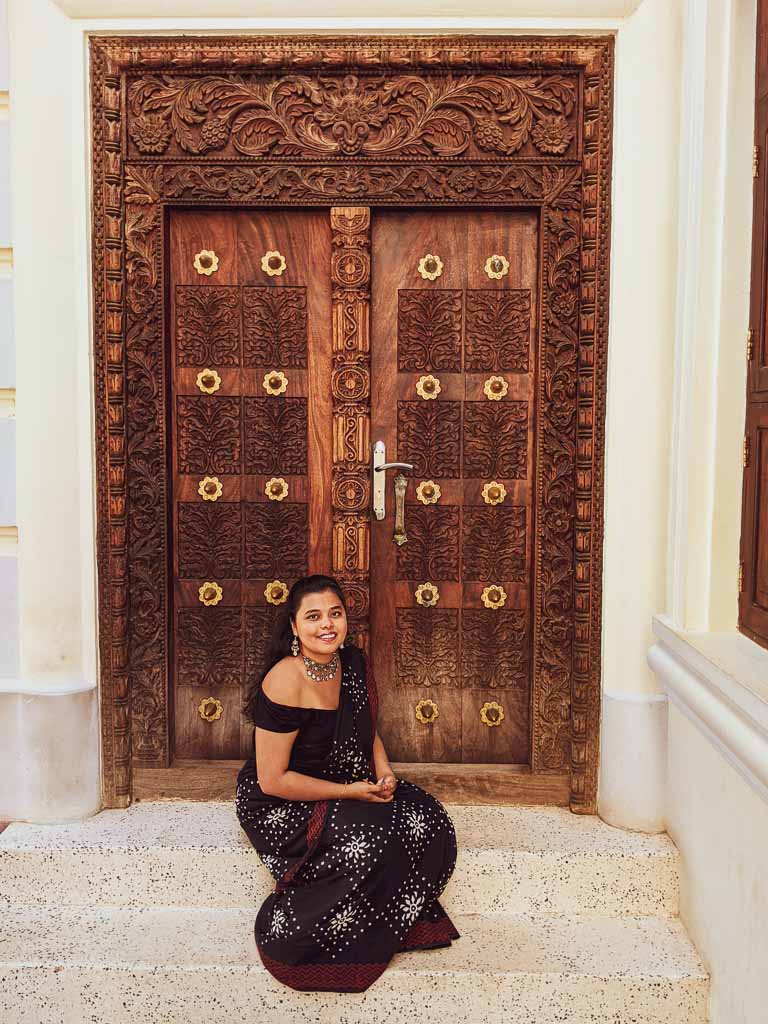
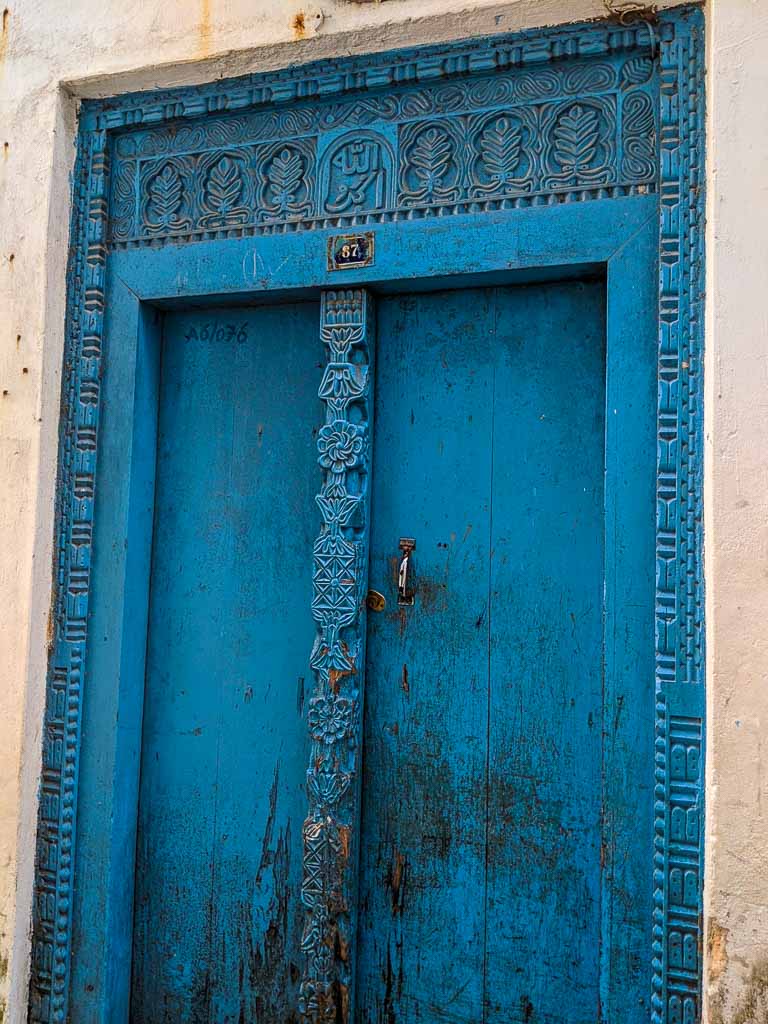
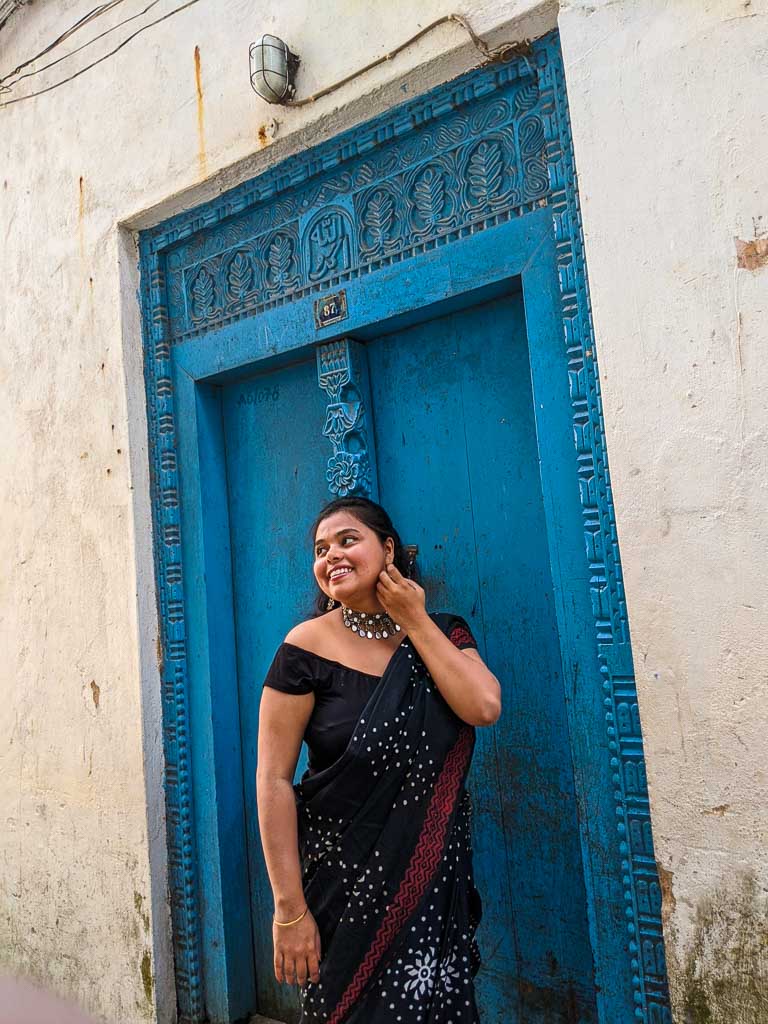
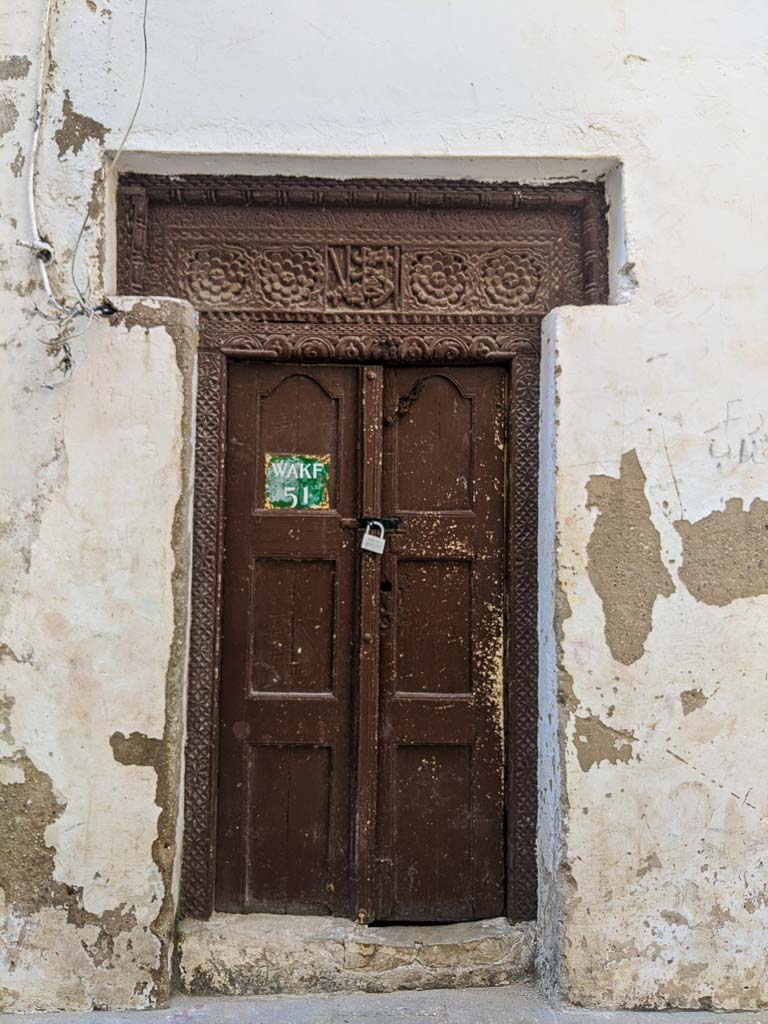
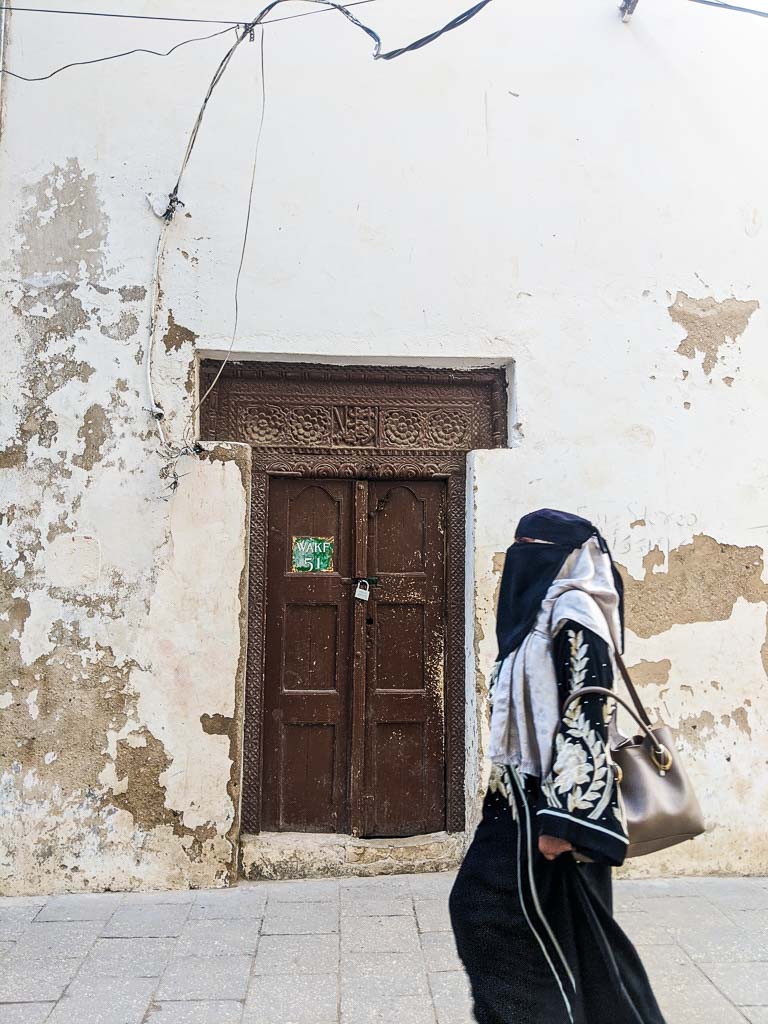
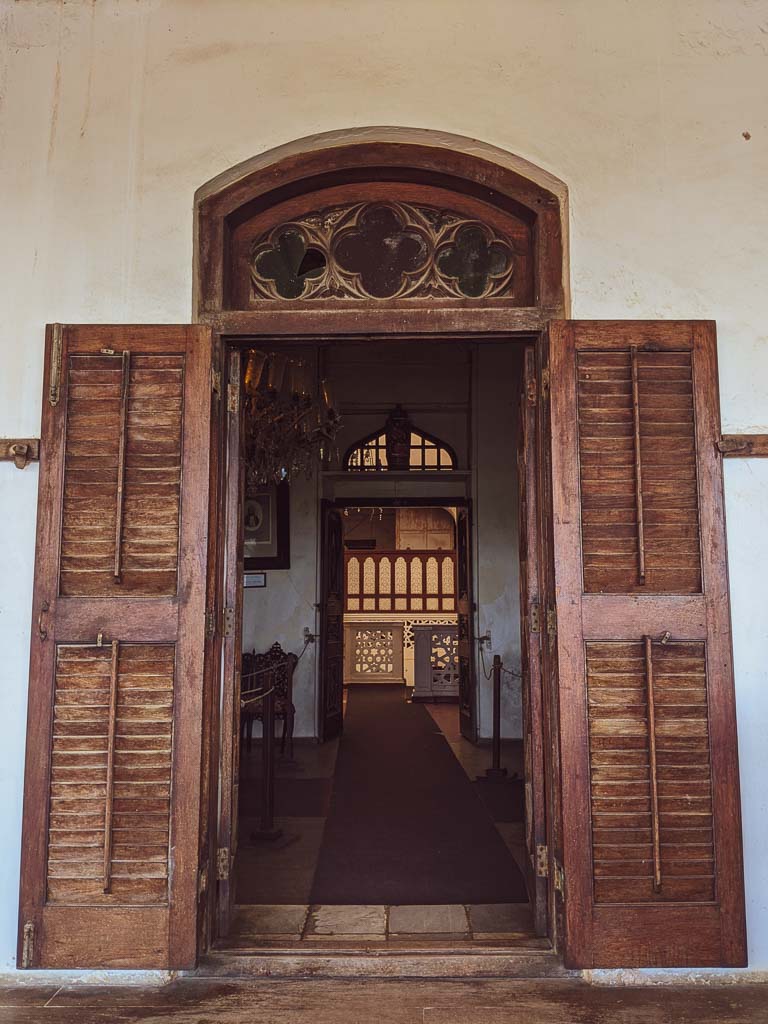
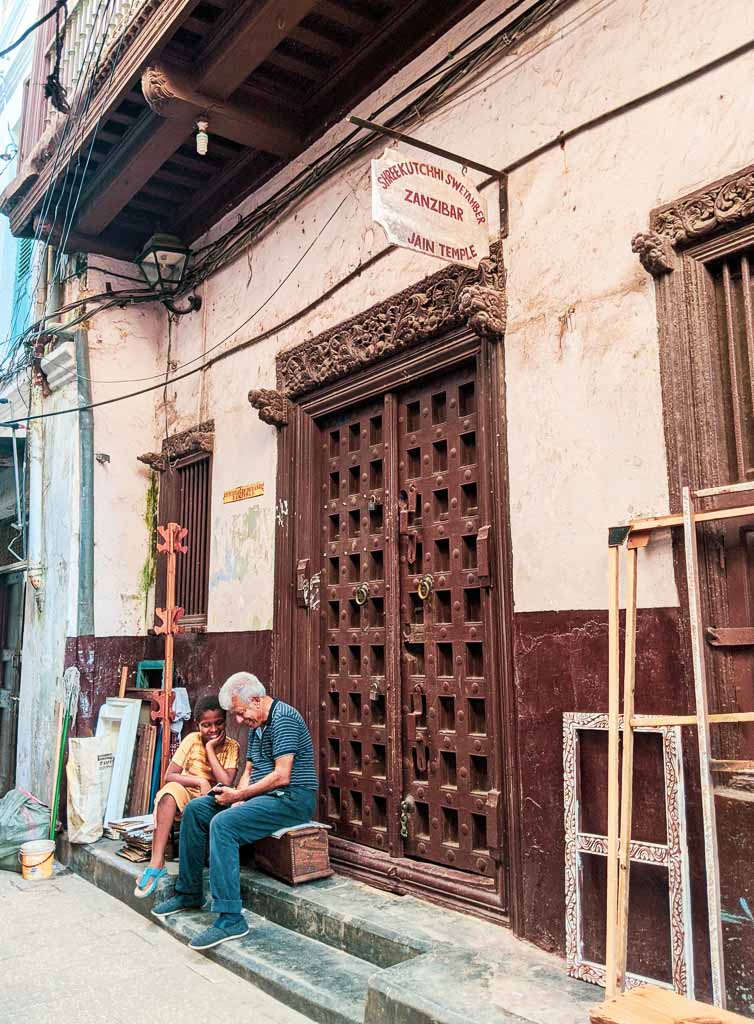
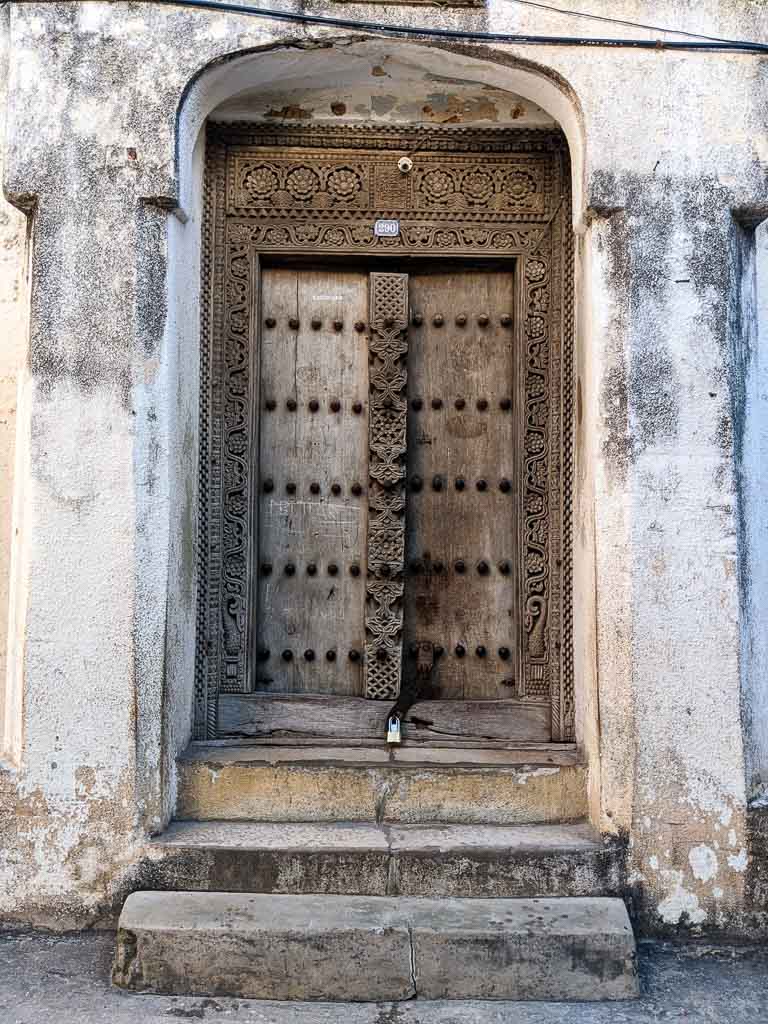
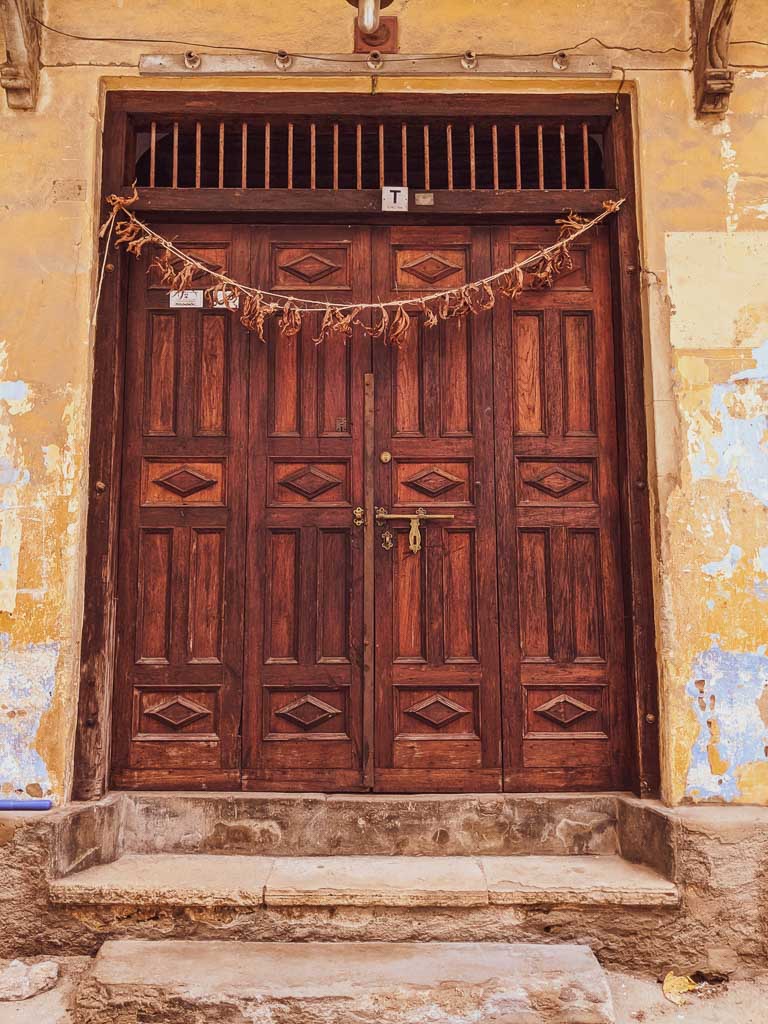
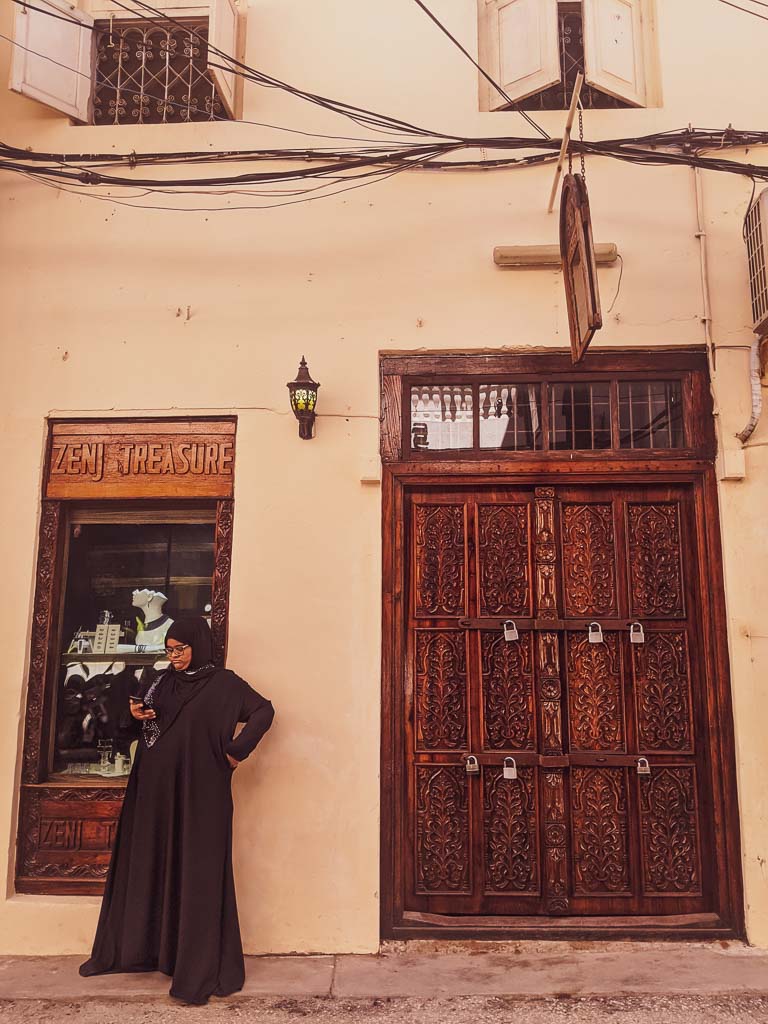
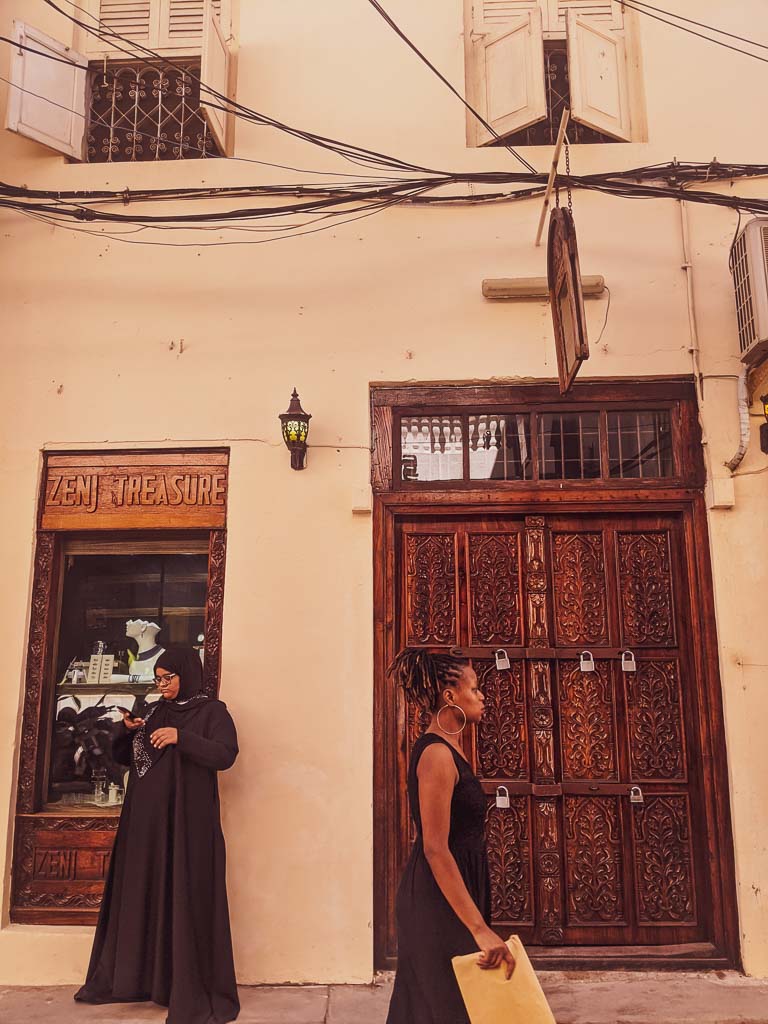
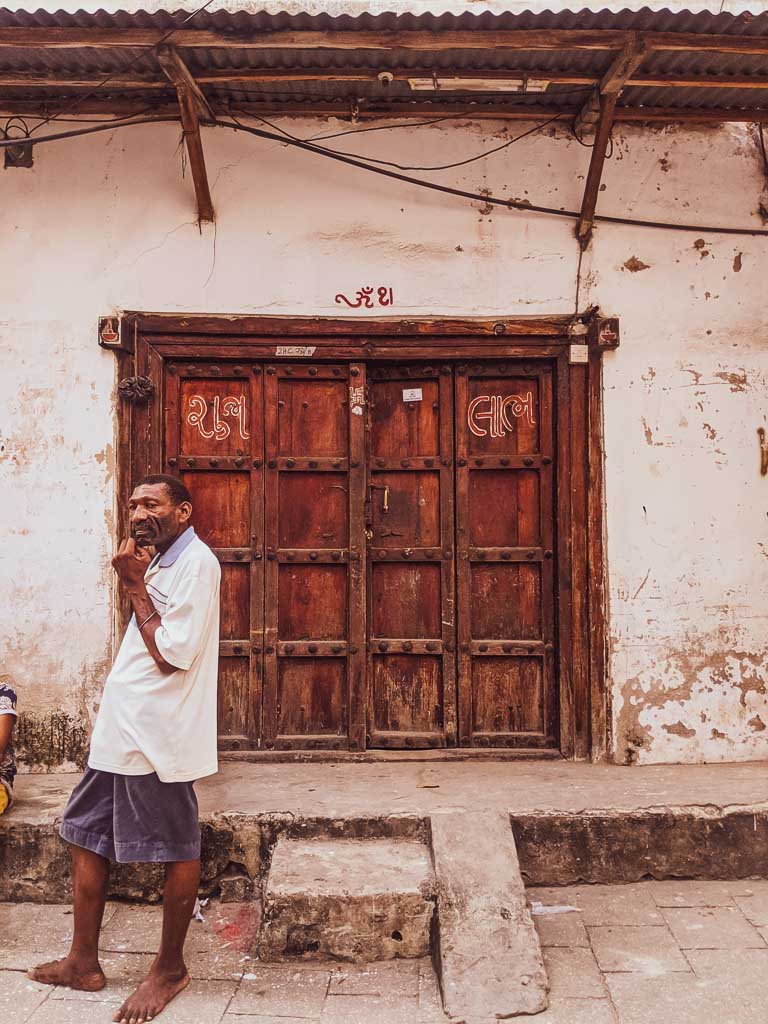
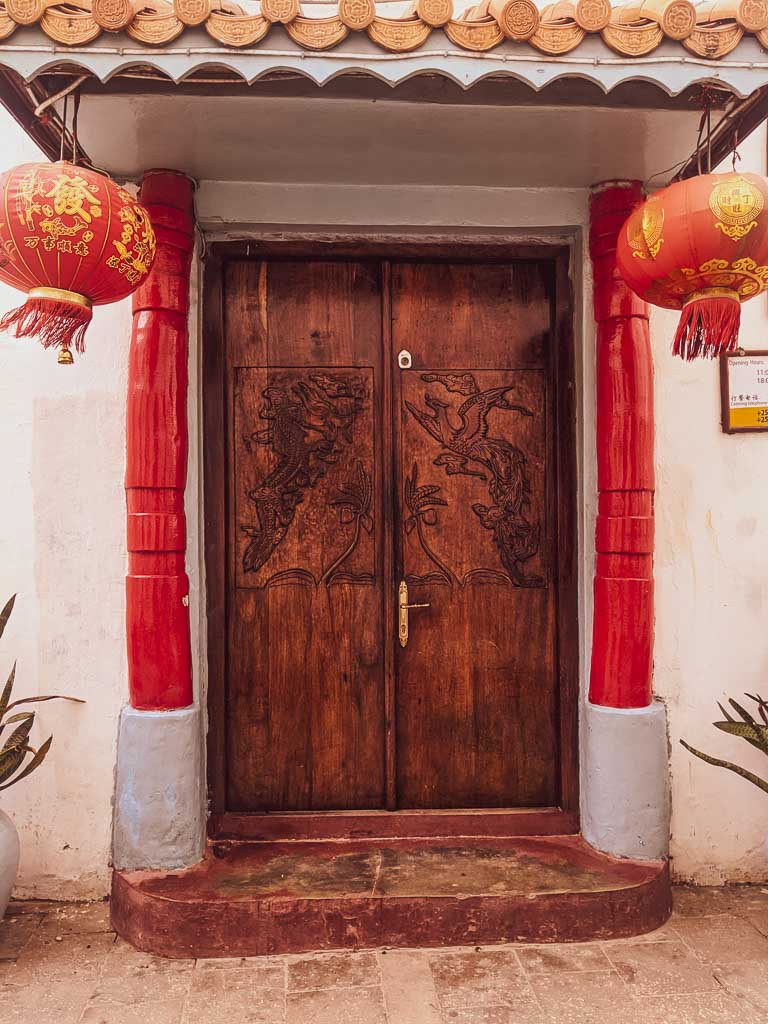
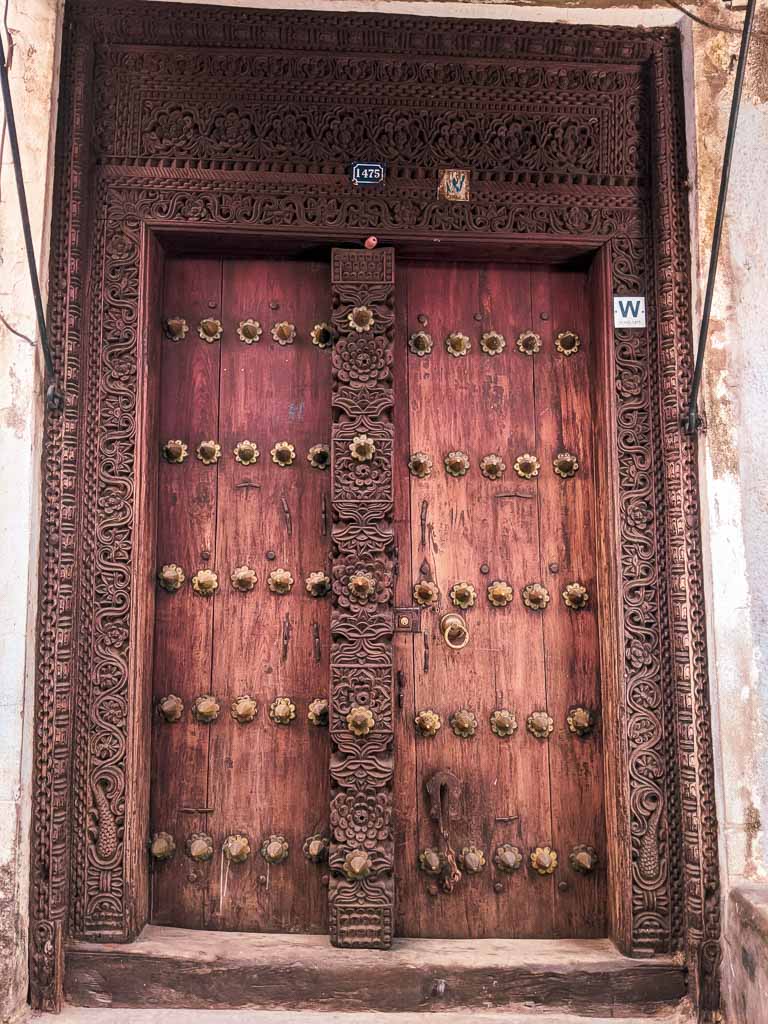
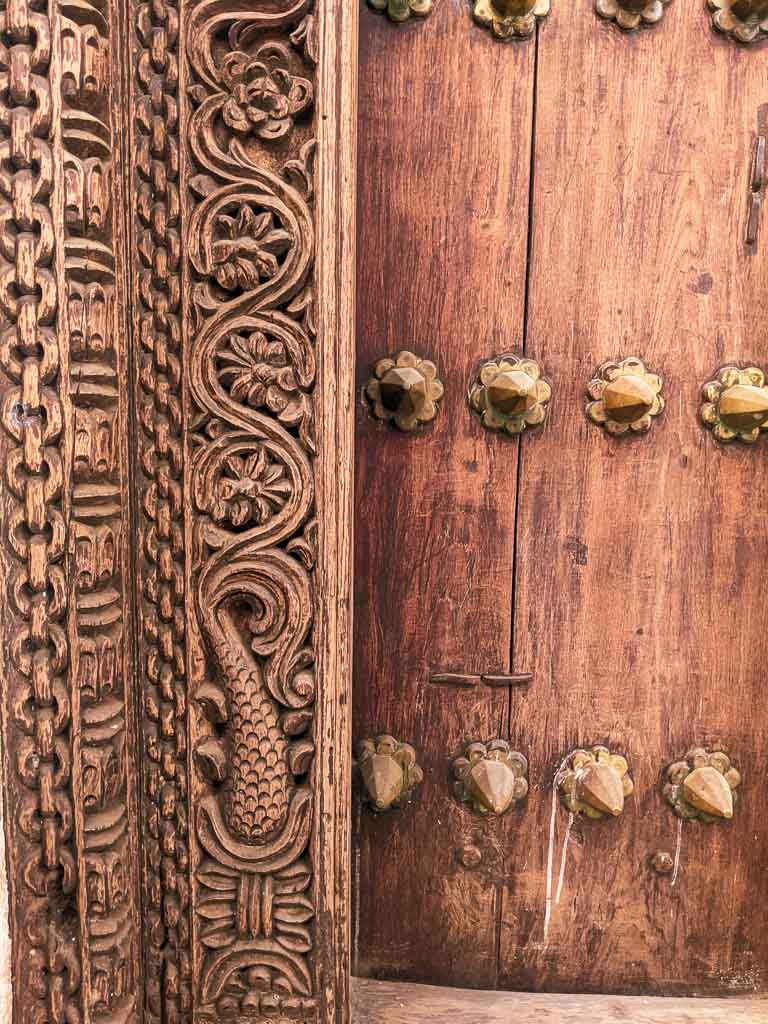
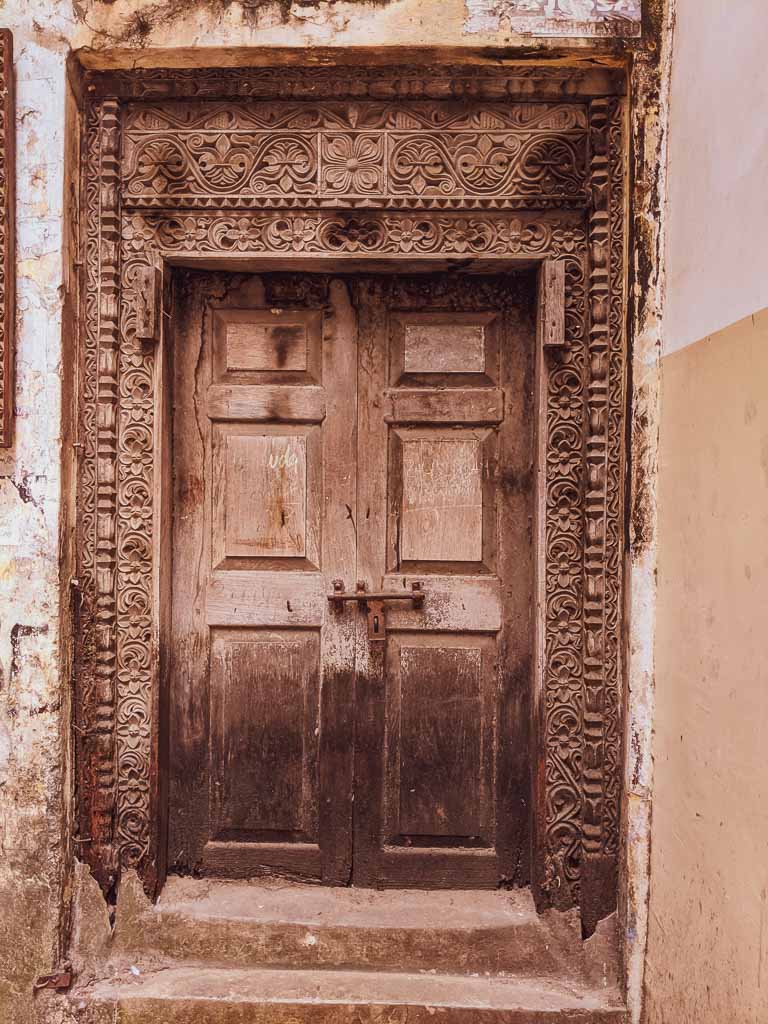
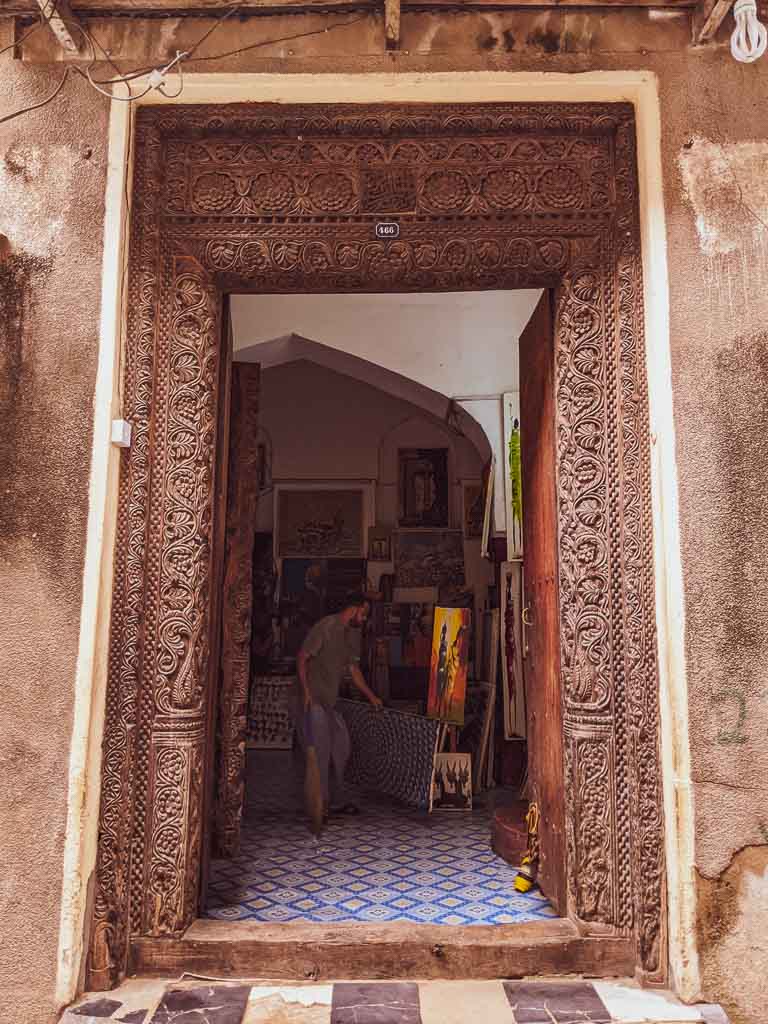
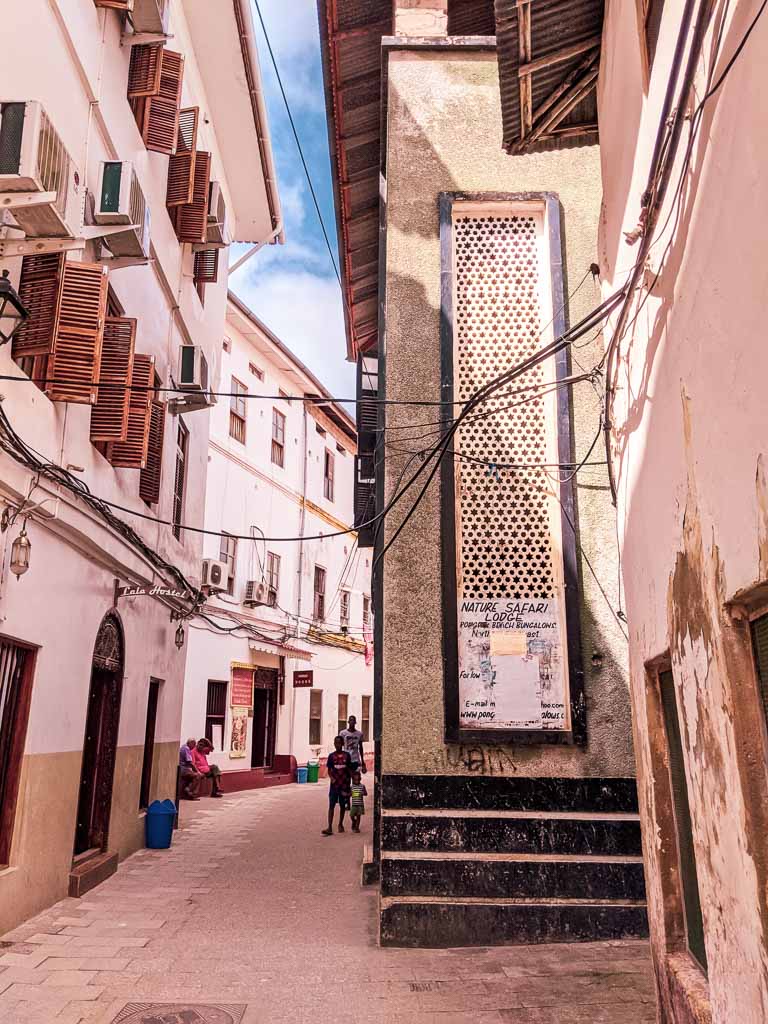
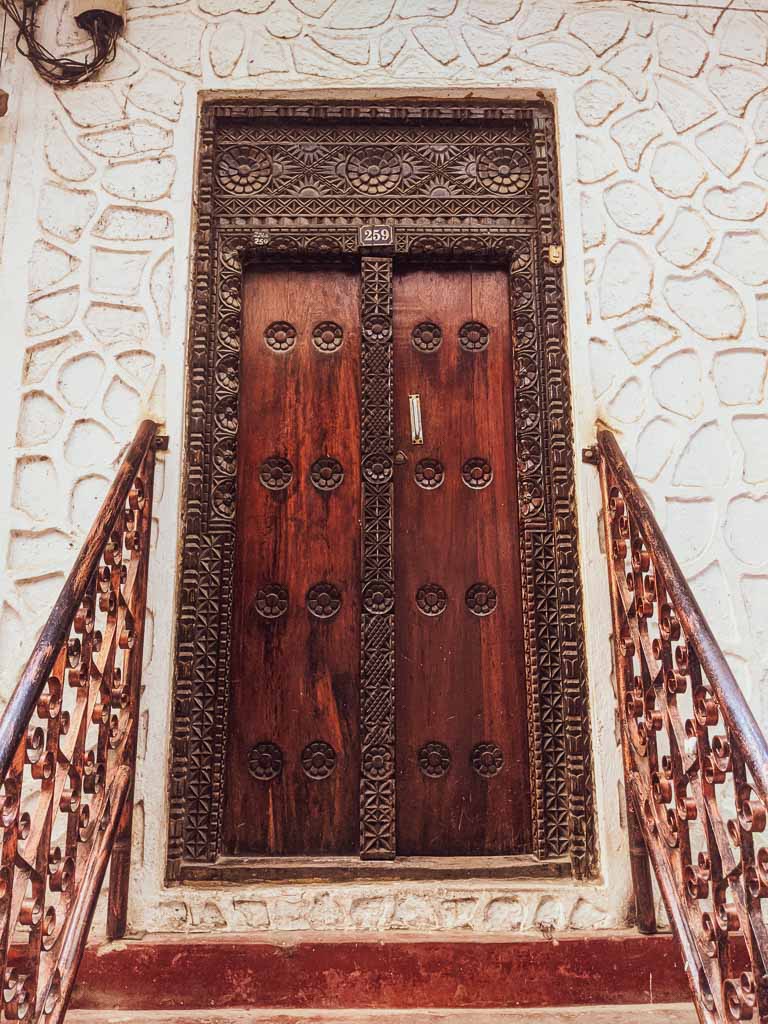
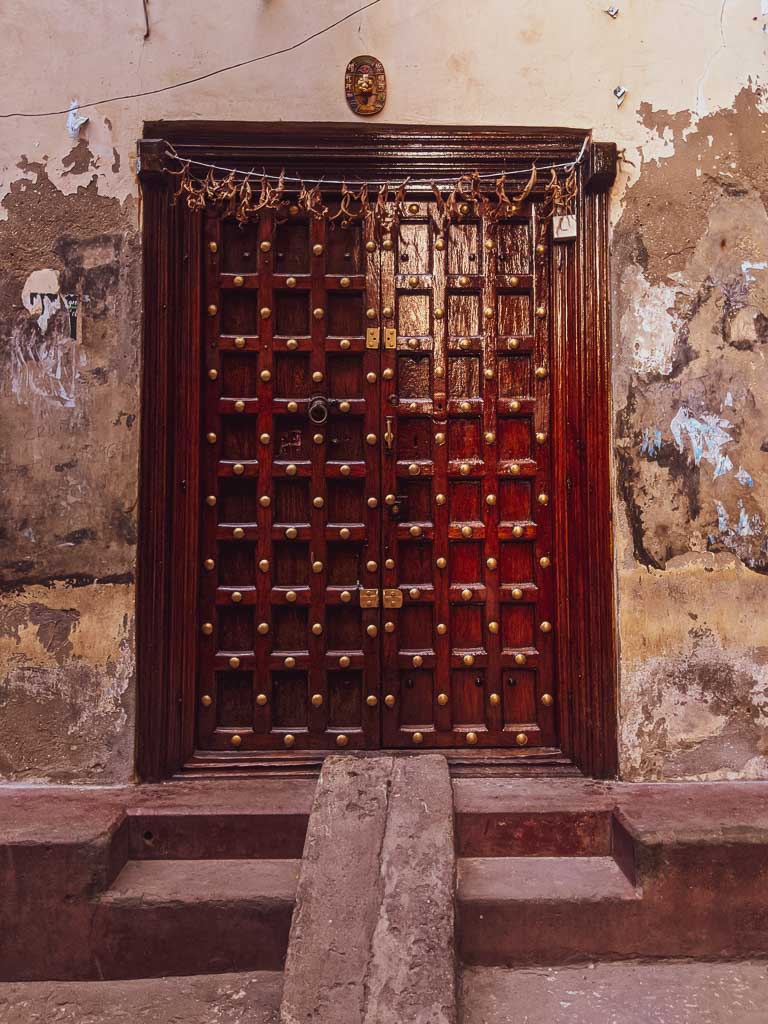
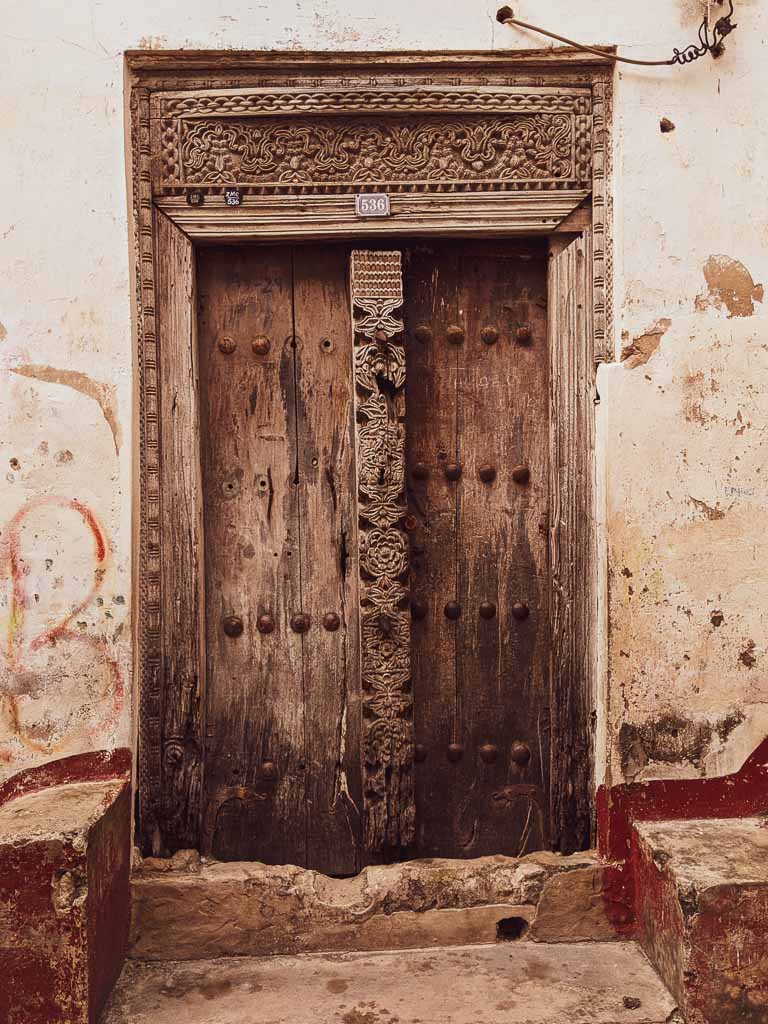
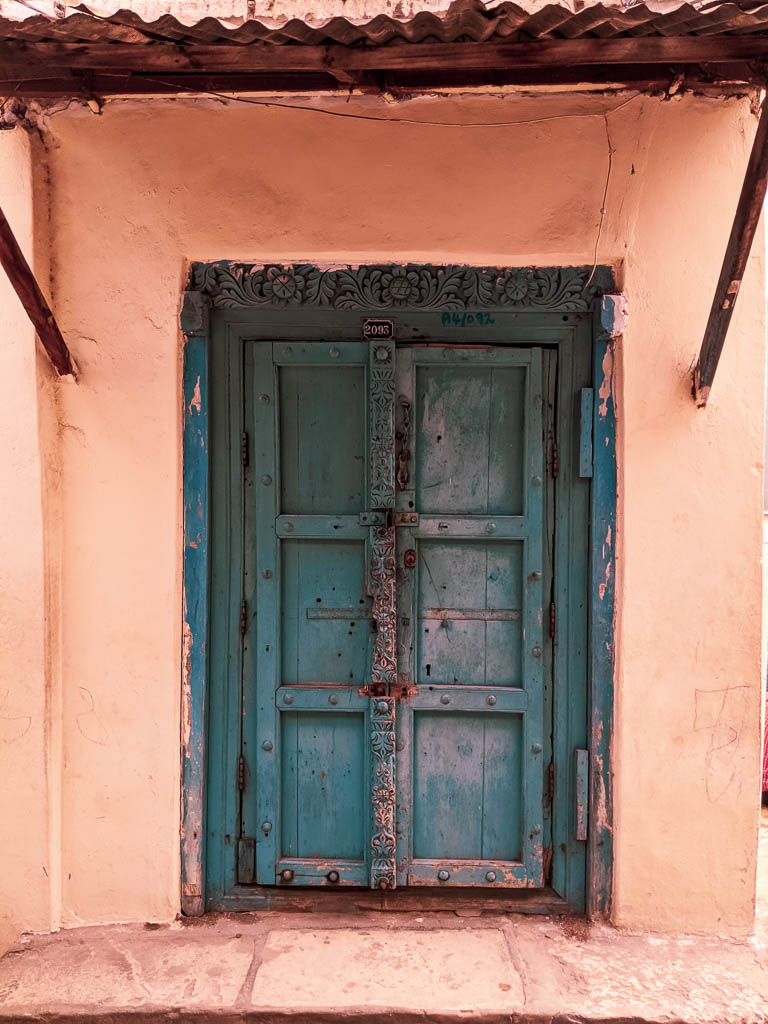
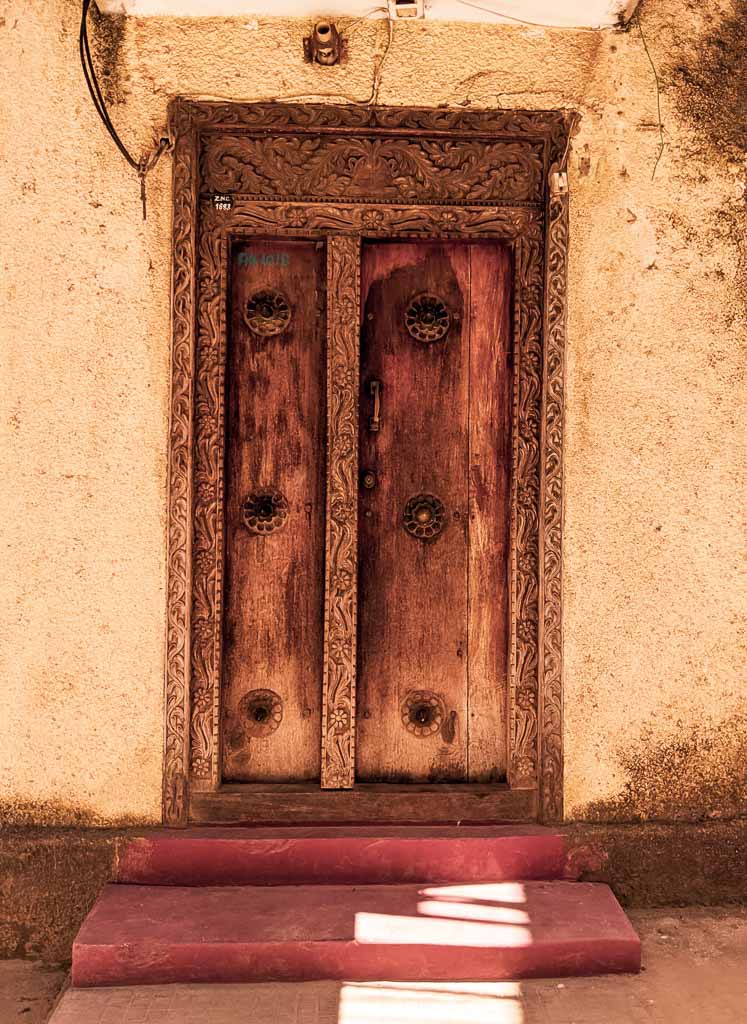
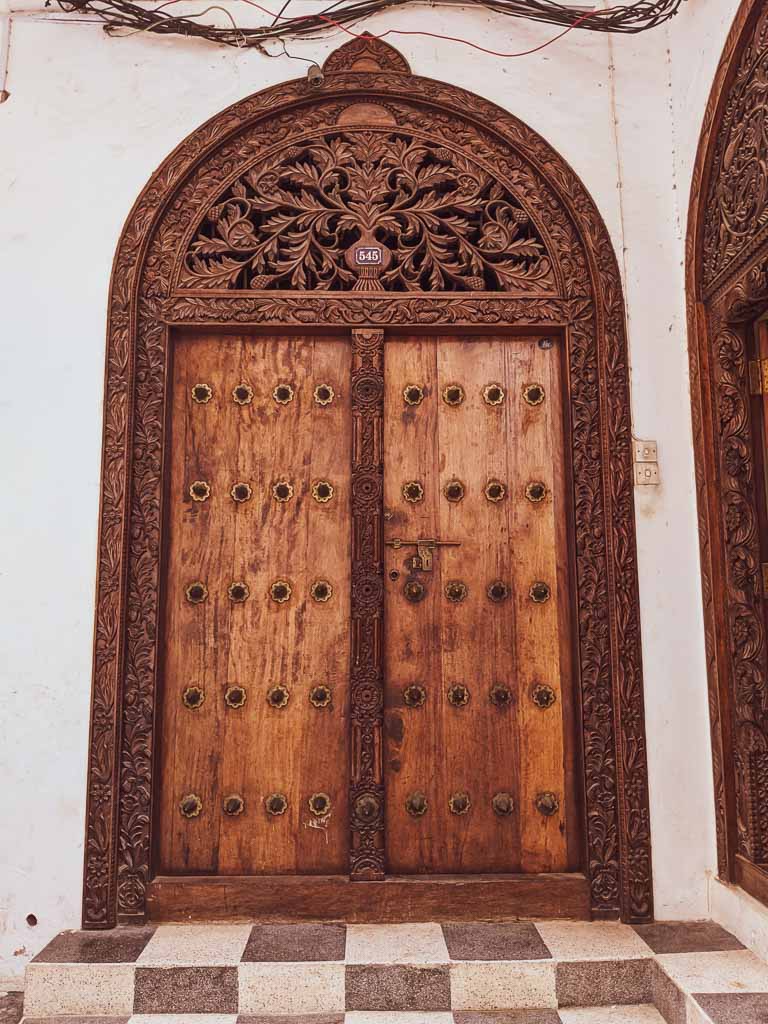
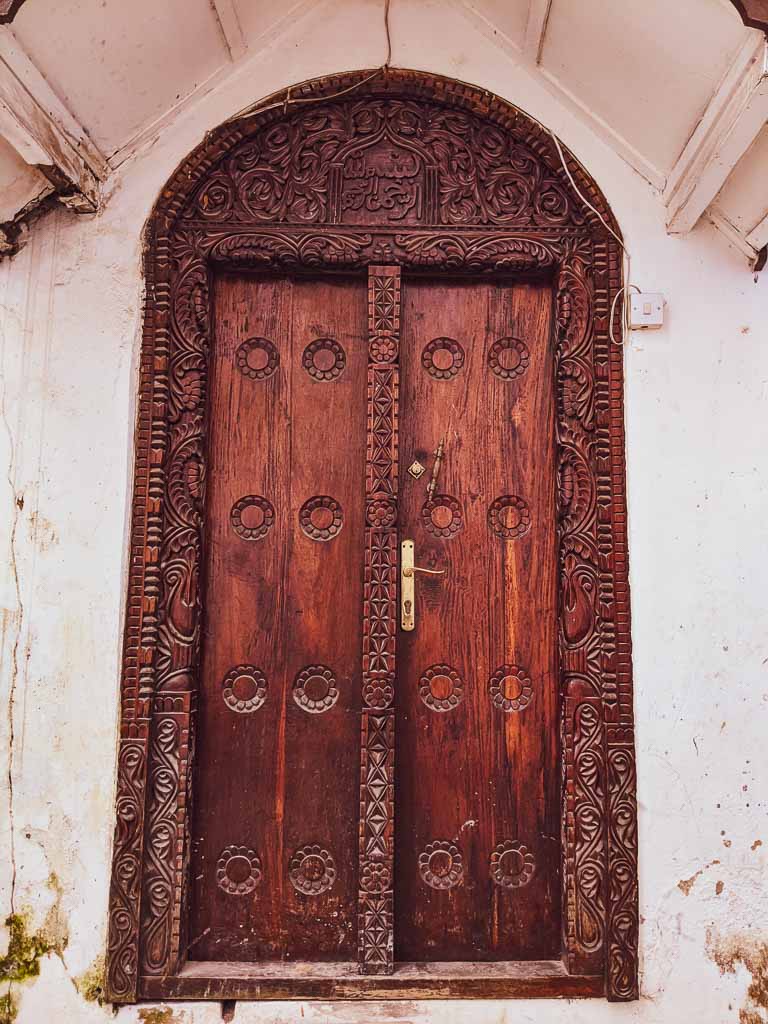
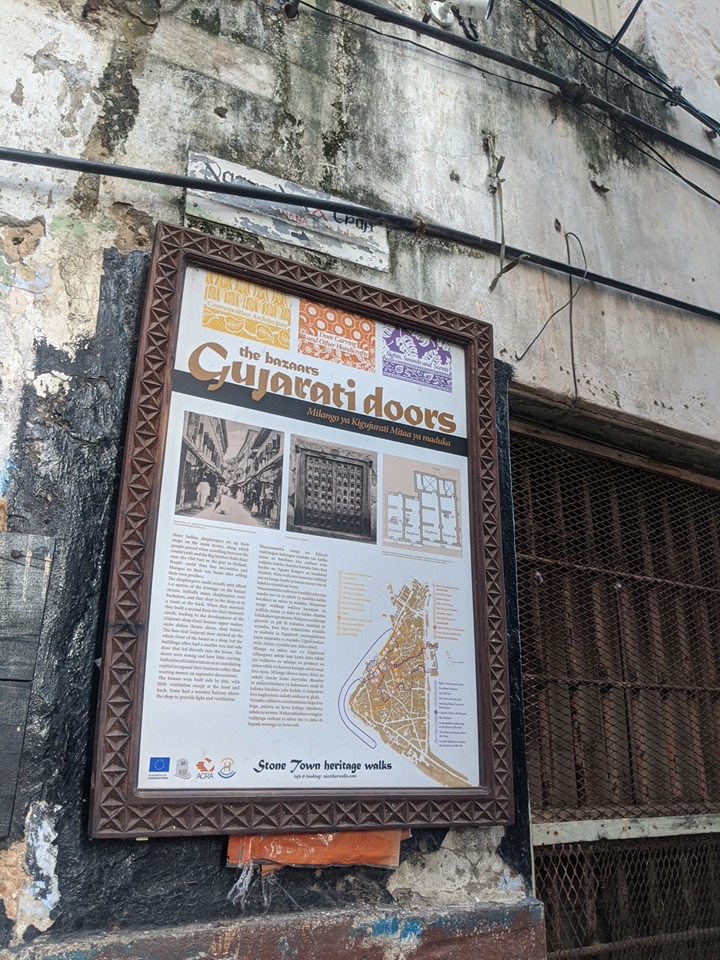
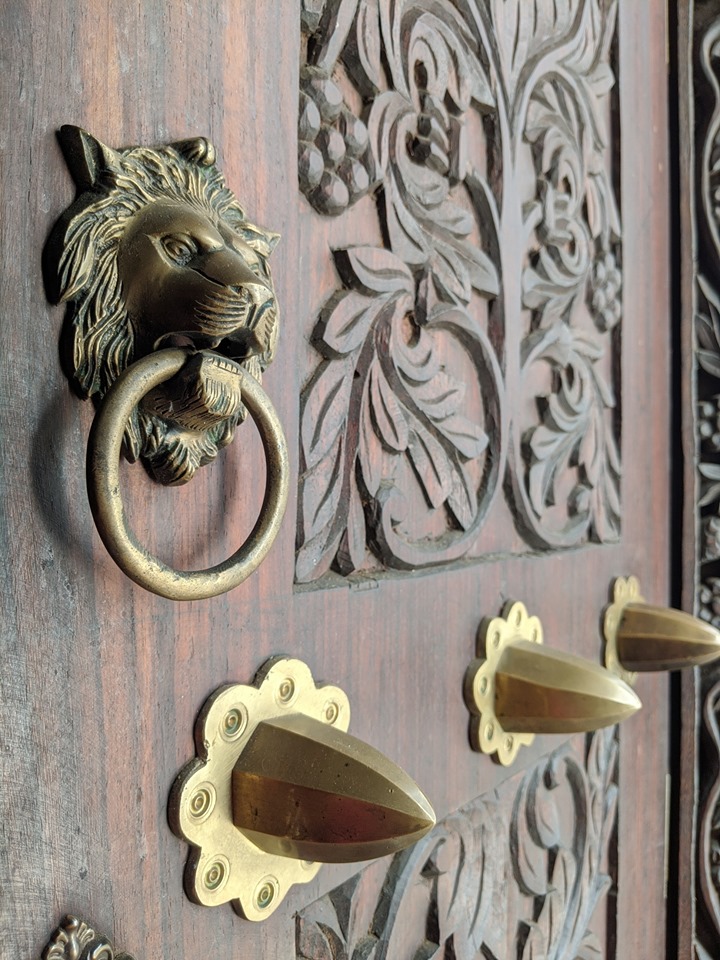
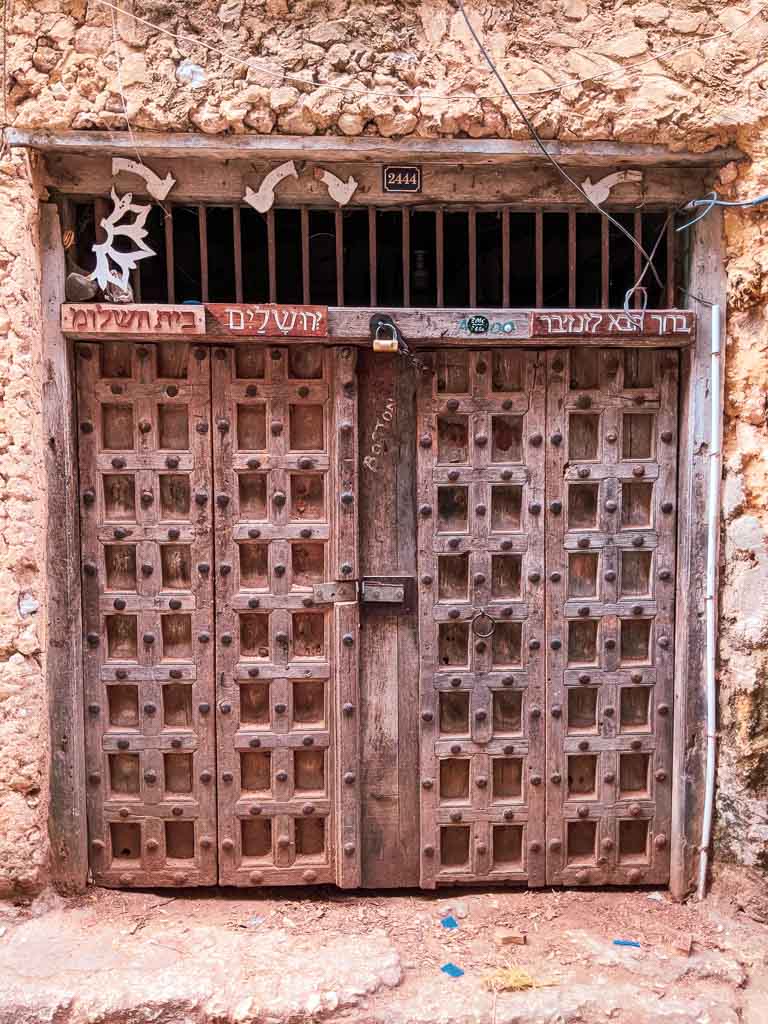
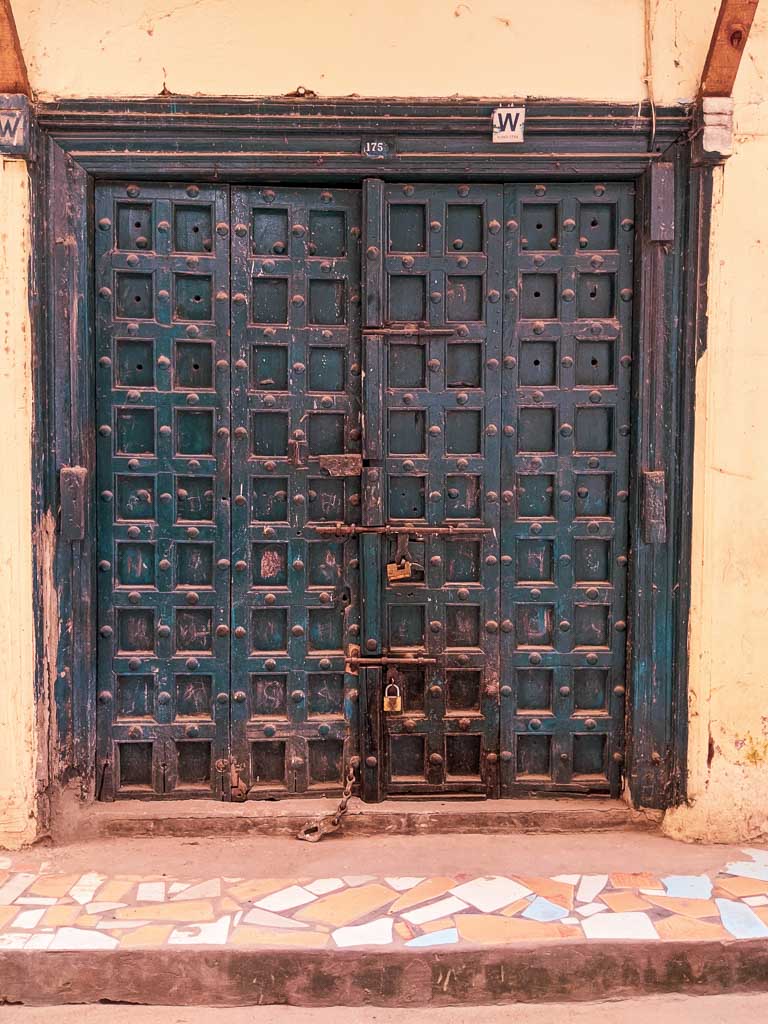
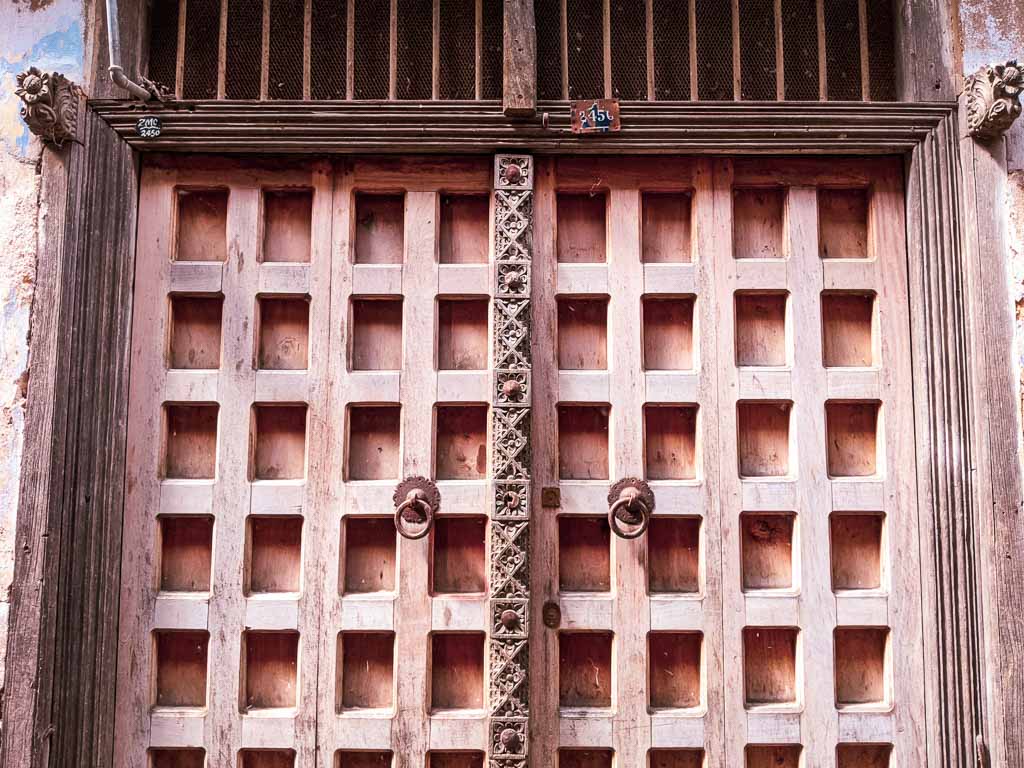
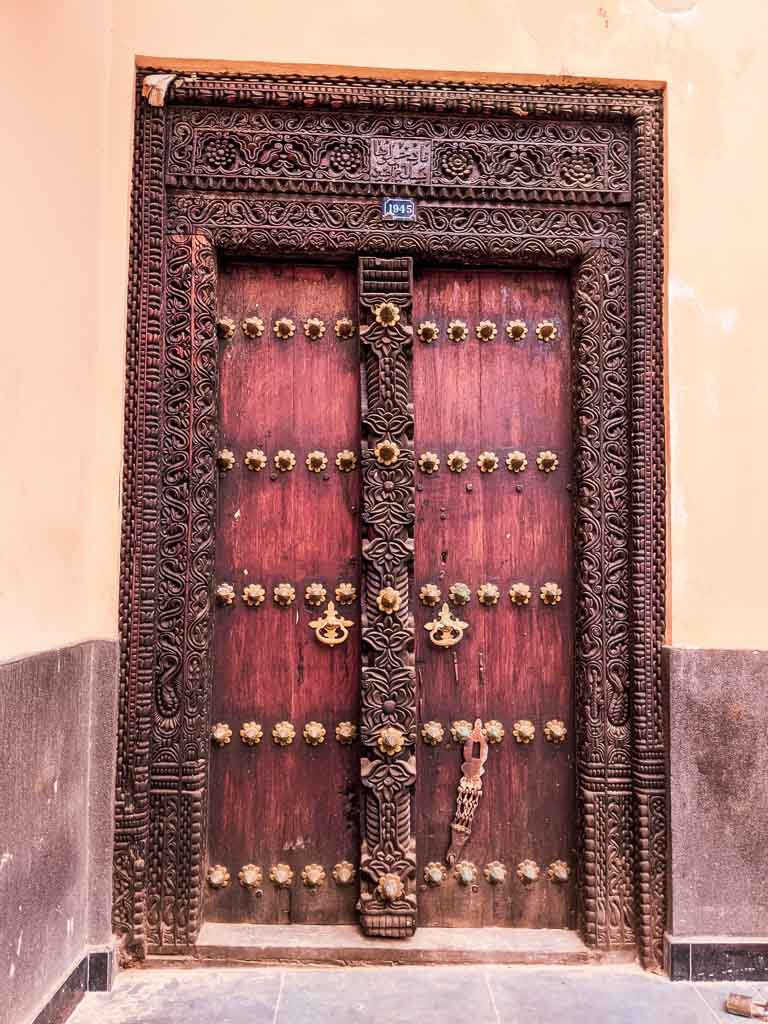
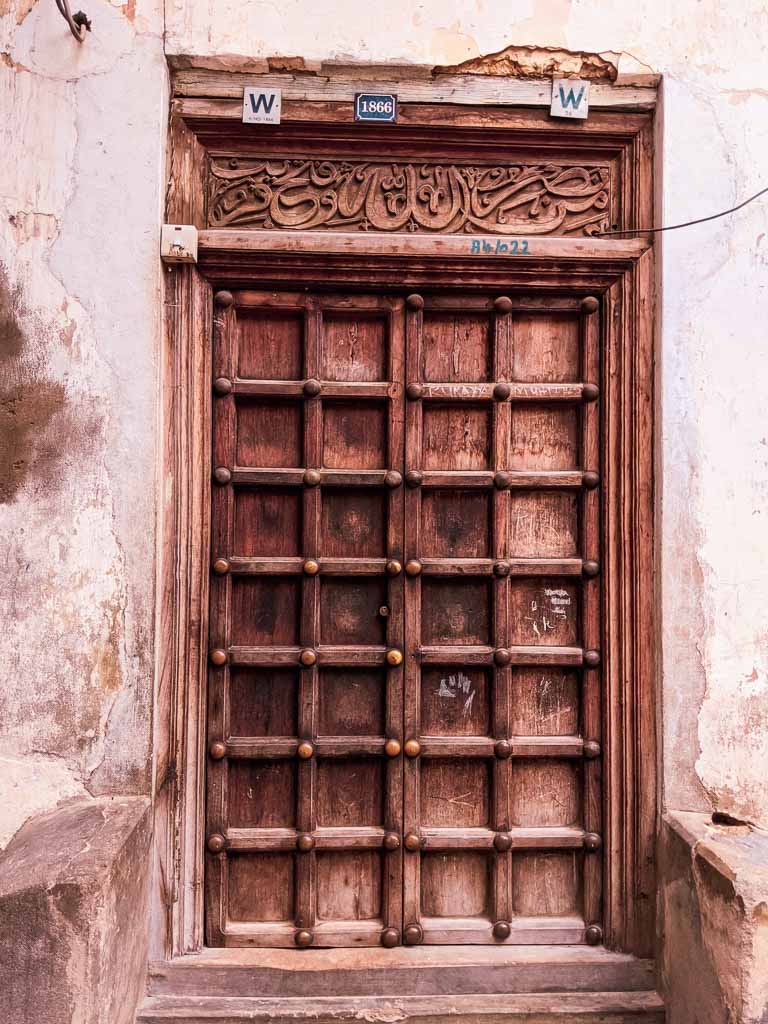
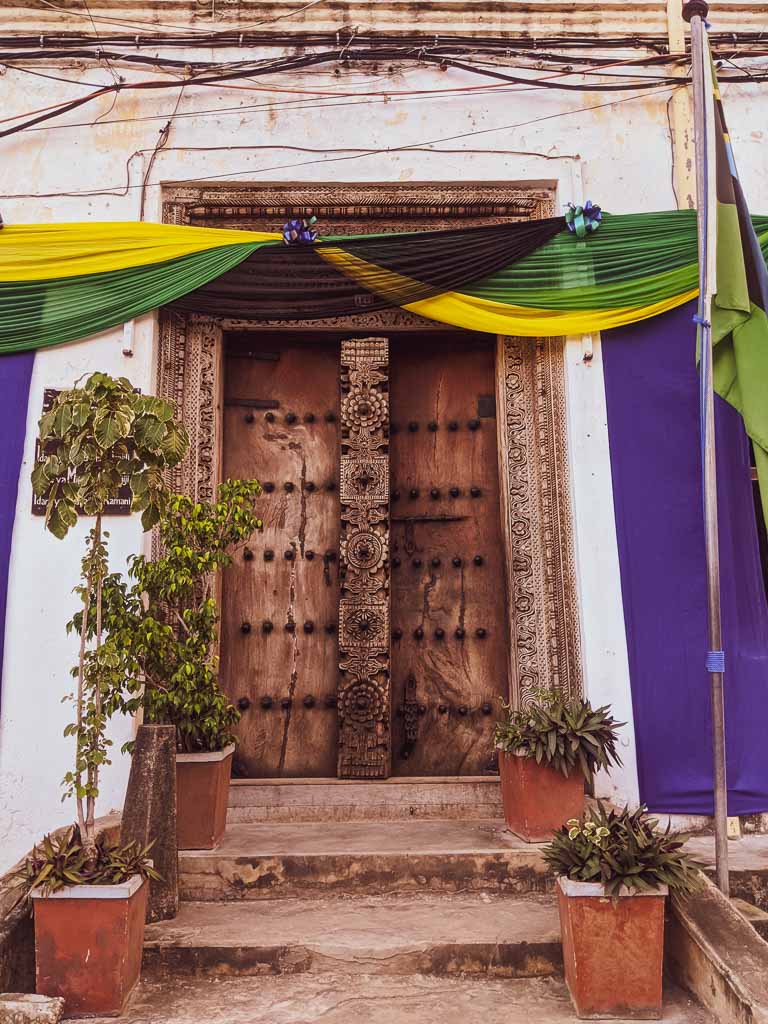
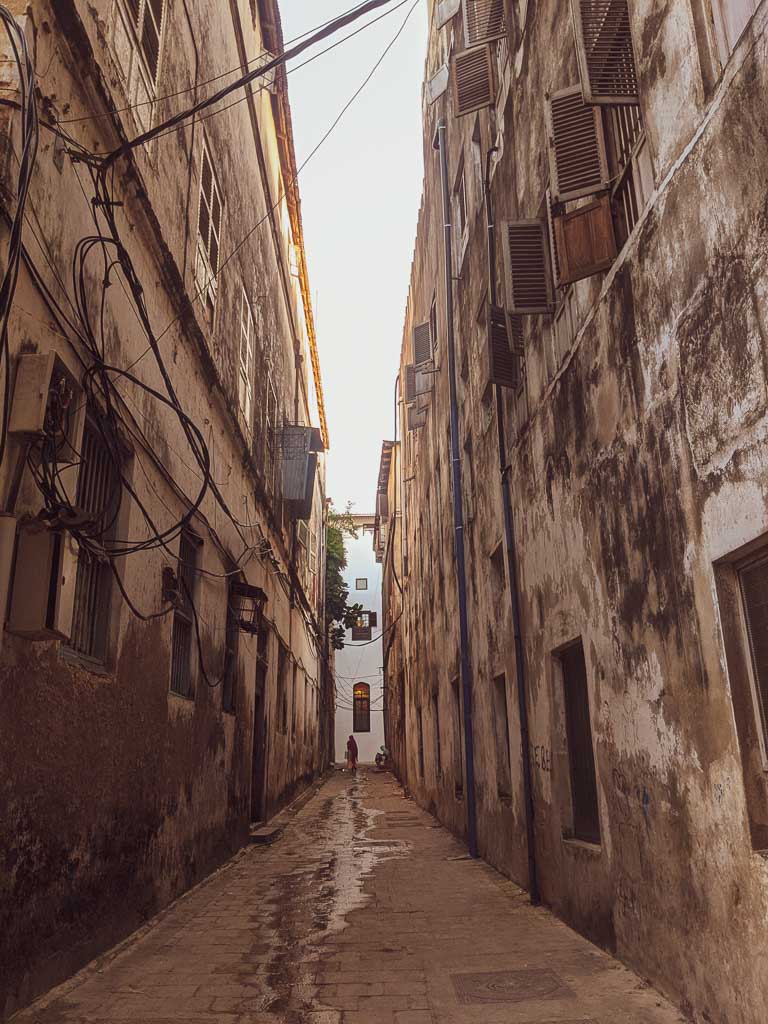
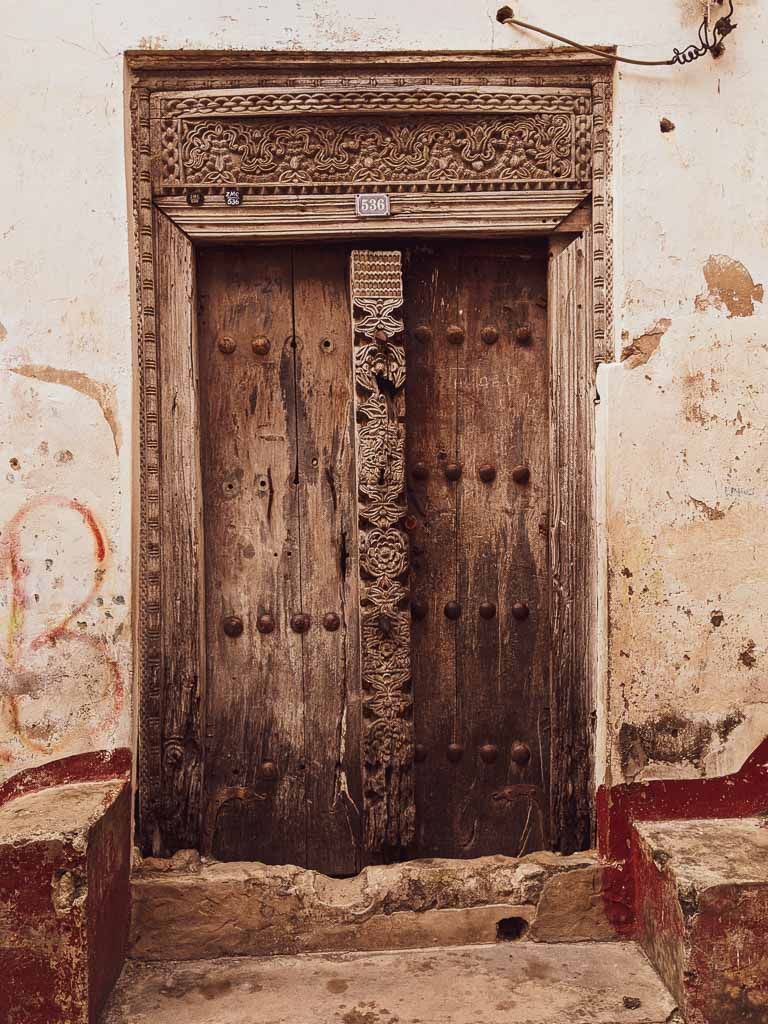
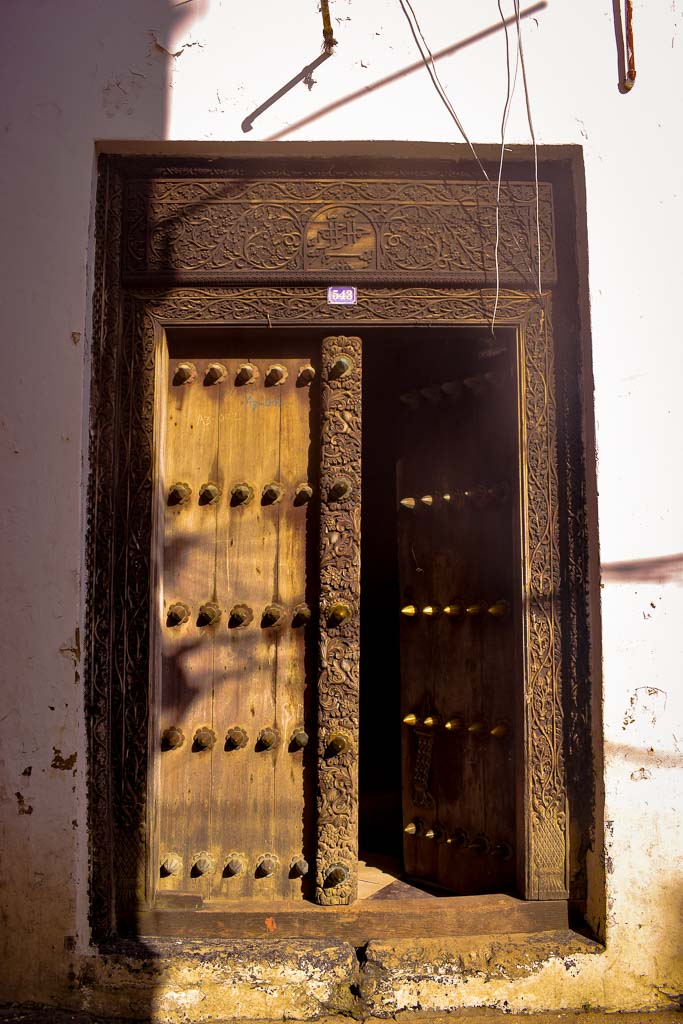
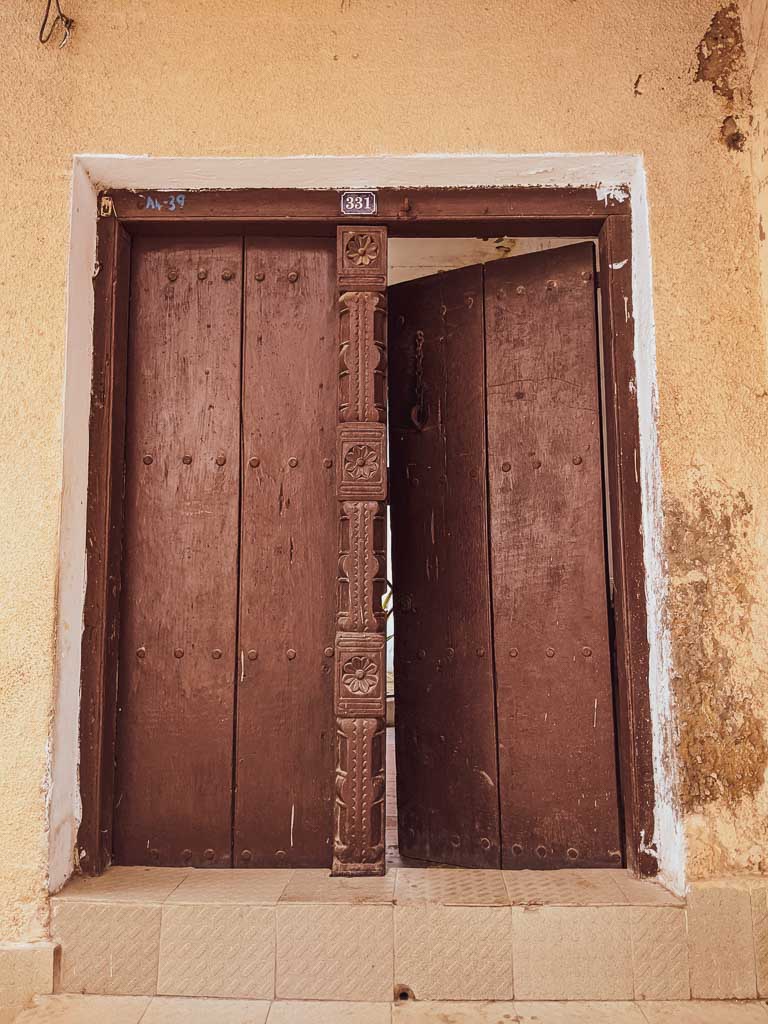
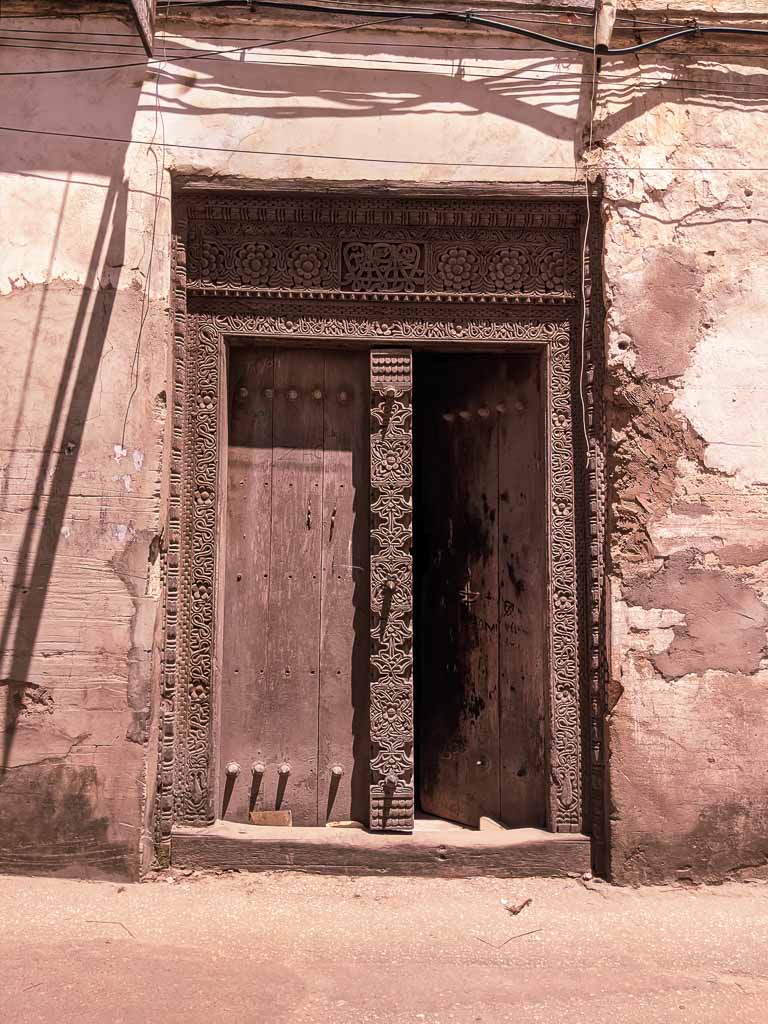
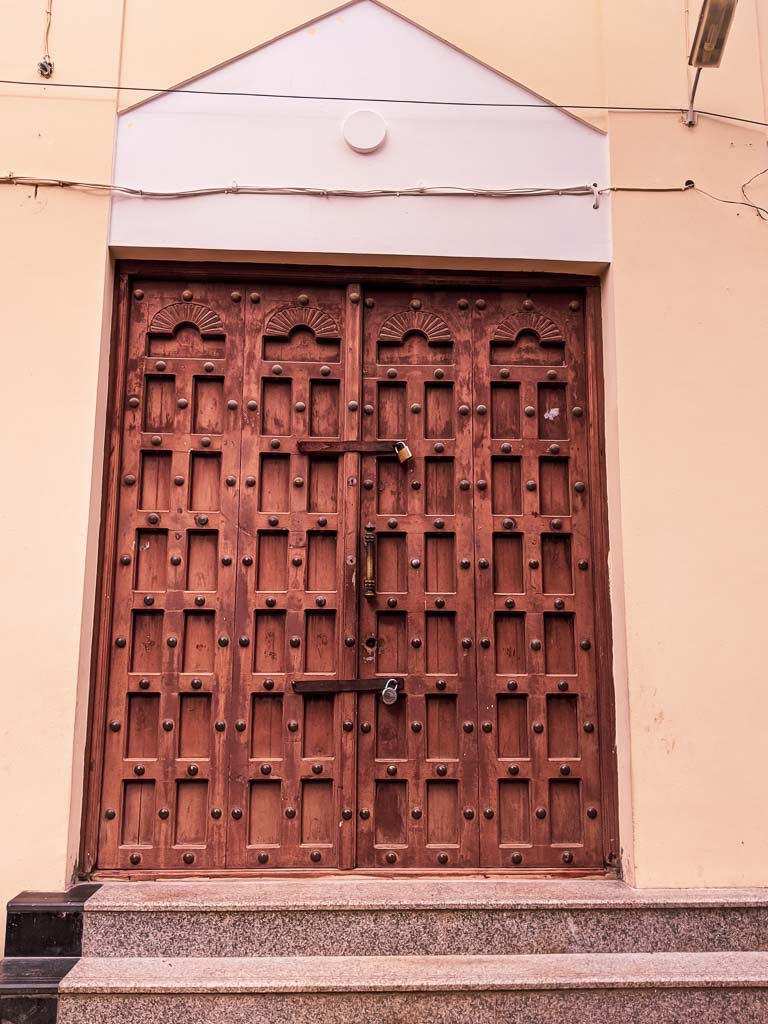
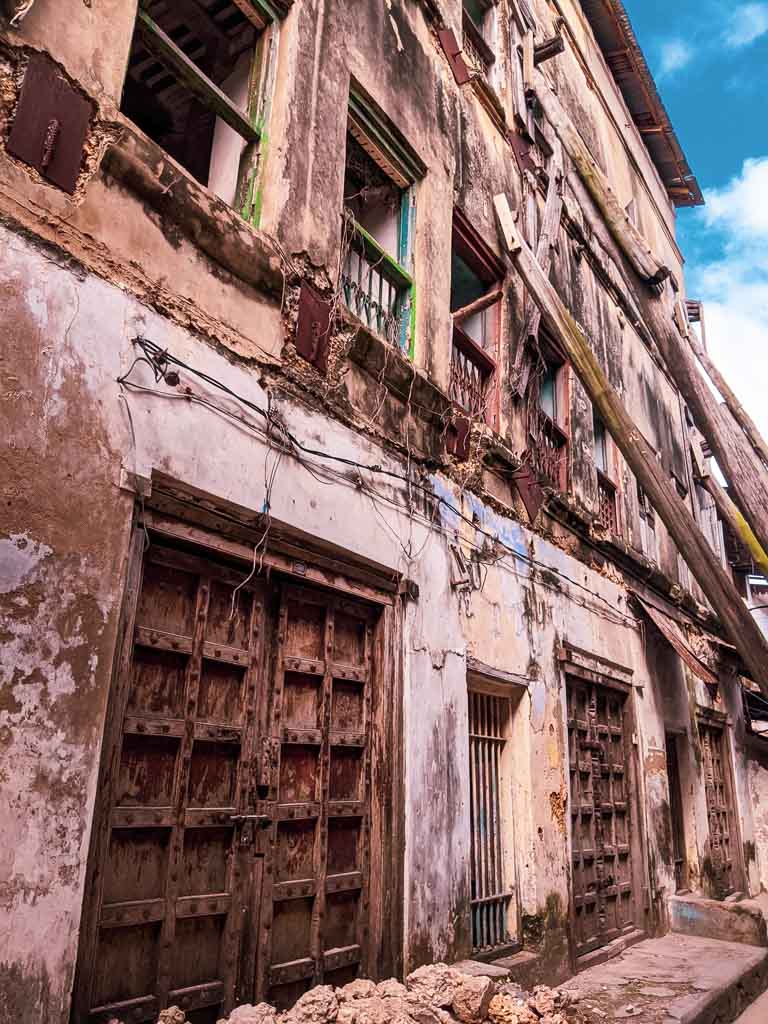
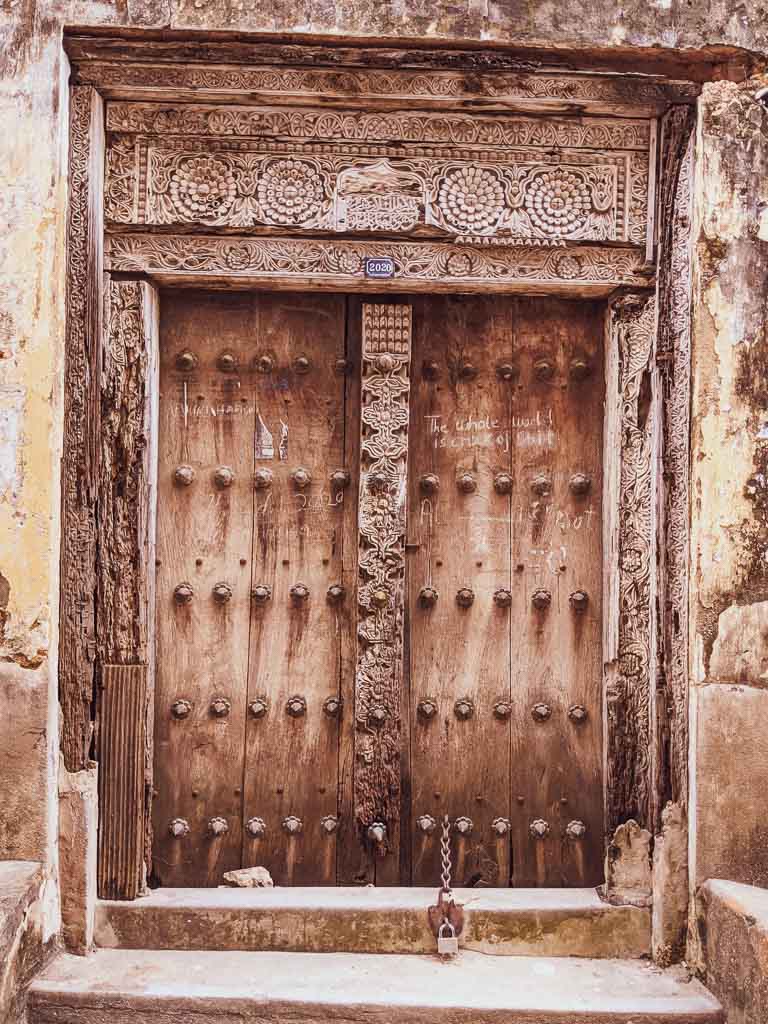
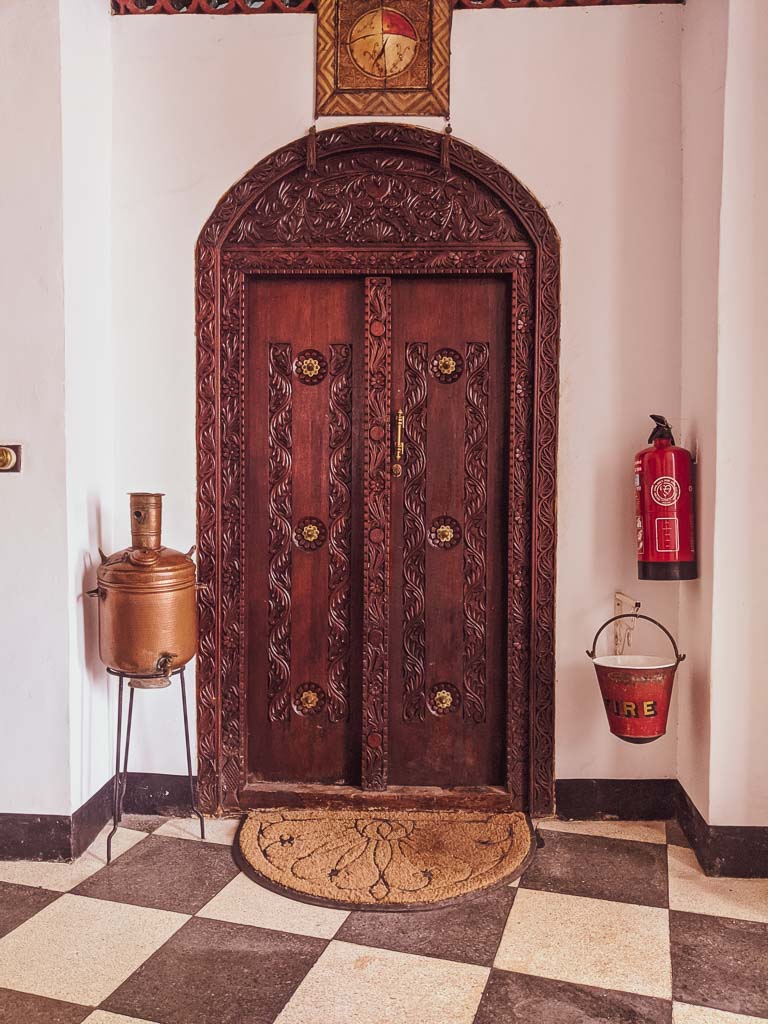
These are gorgeous! I had no idea Stonetown had so many amazing doors! I love that you included the meaning of the flowers/vines. It’s very cool that the more important the family, the posher the door. 😀
Wow so many varieties..those doors are absolutely gorgeous
Girl, you know your doors! What a fascinating angle to explore a city. And who knew about all these influences and hidden meanings! Great post!
Wow, these are so beautiful! Thanks for sharing 🙂
I actually have a thing with doors. These are so beautiful and intricate. Loved reading this post.
I love finding old doors everywhere we travel. Zanzibar sure has a wealth of beautiful doors! Thanks for capturing them and telling their stories.